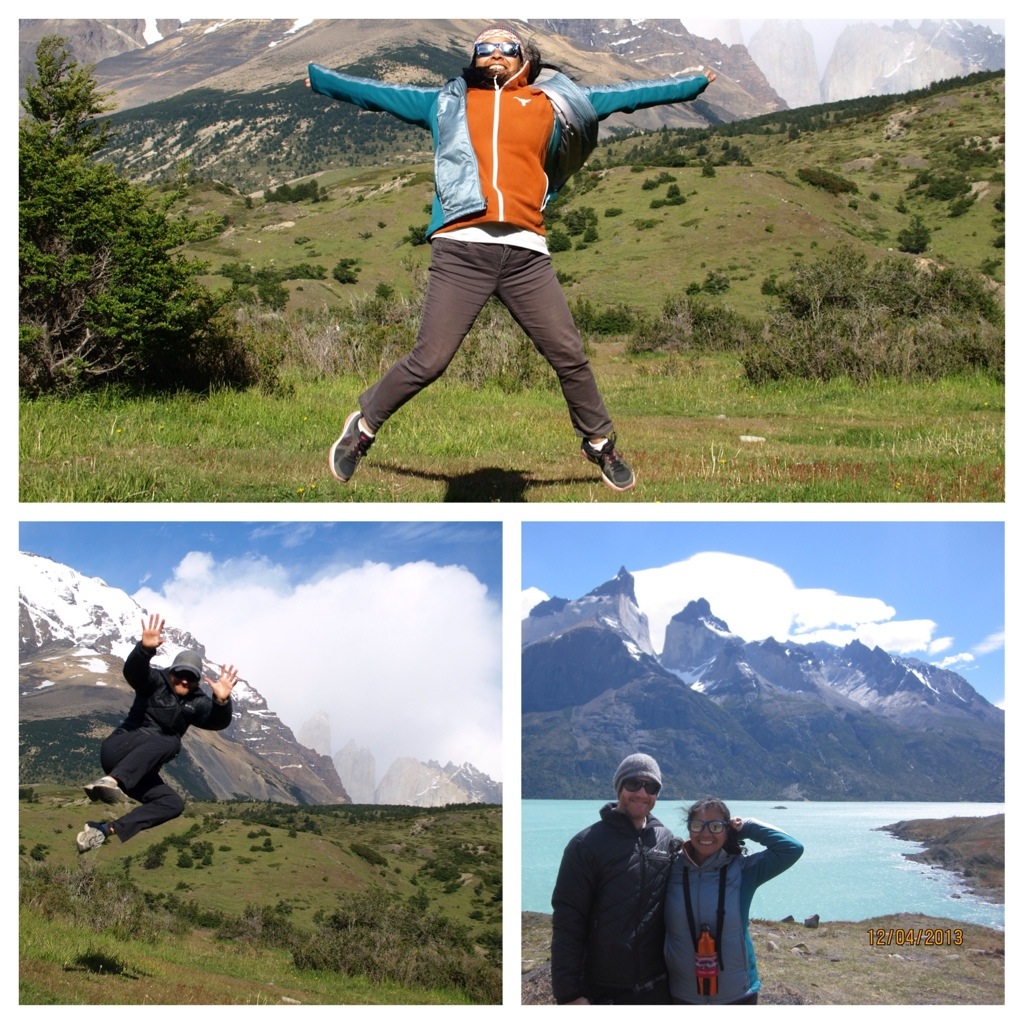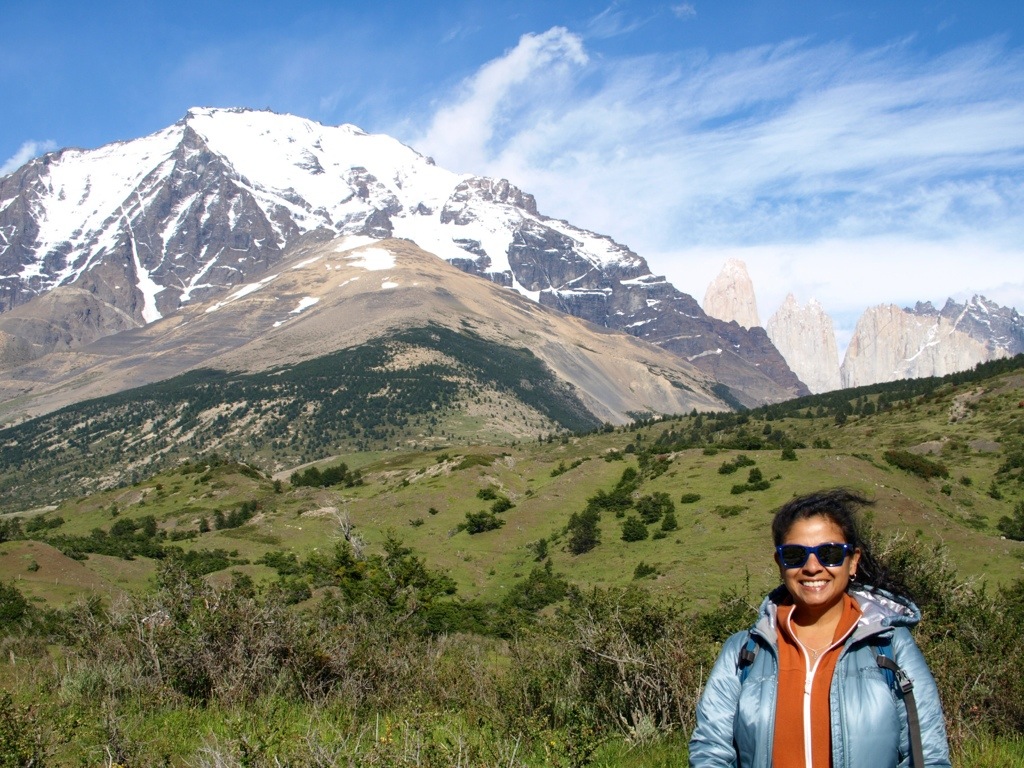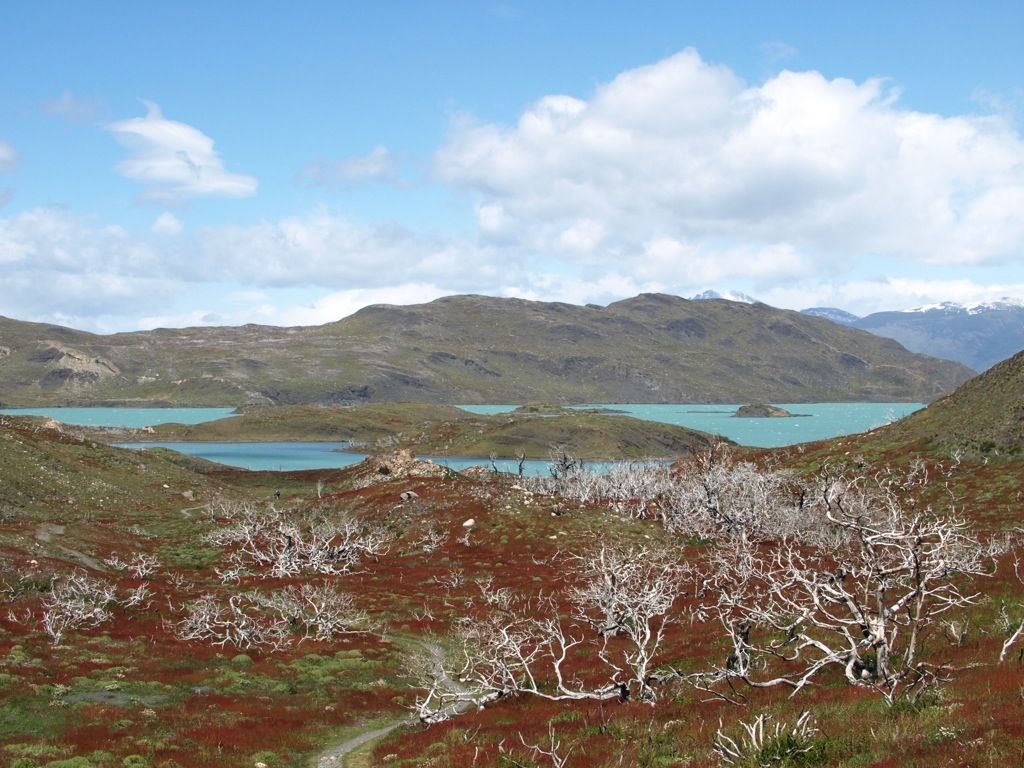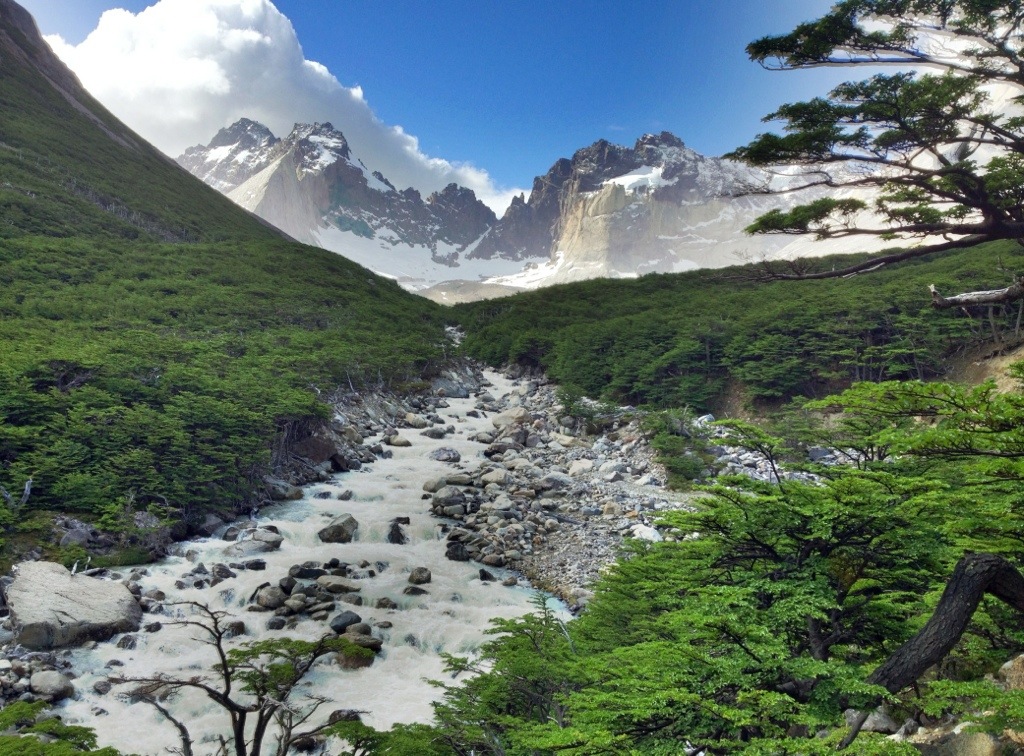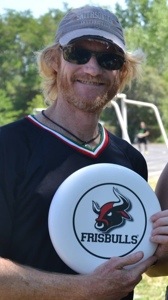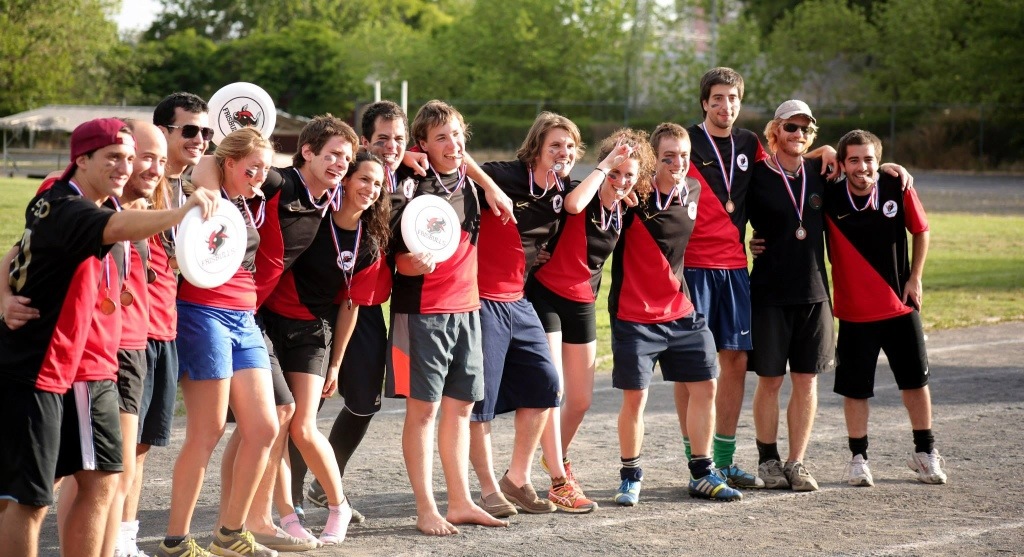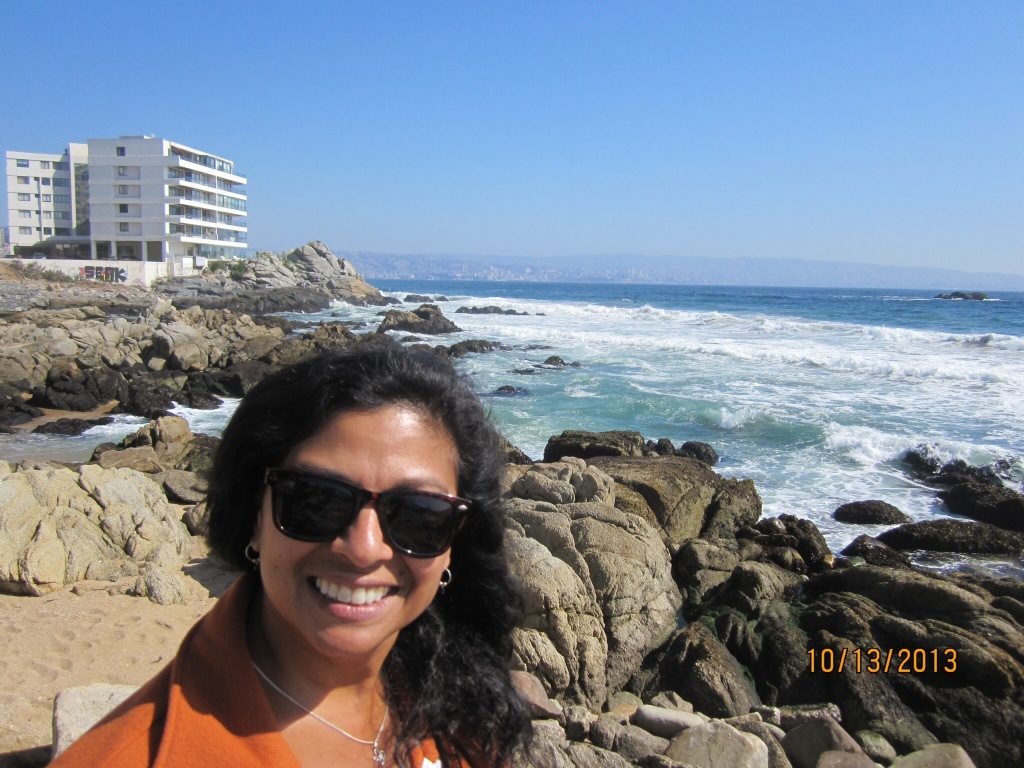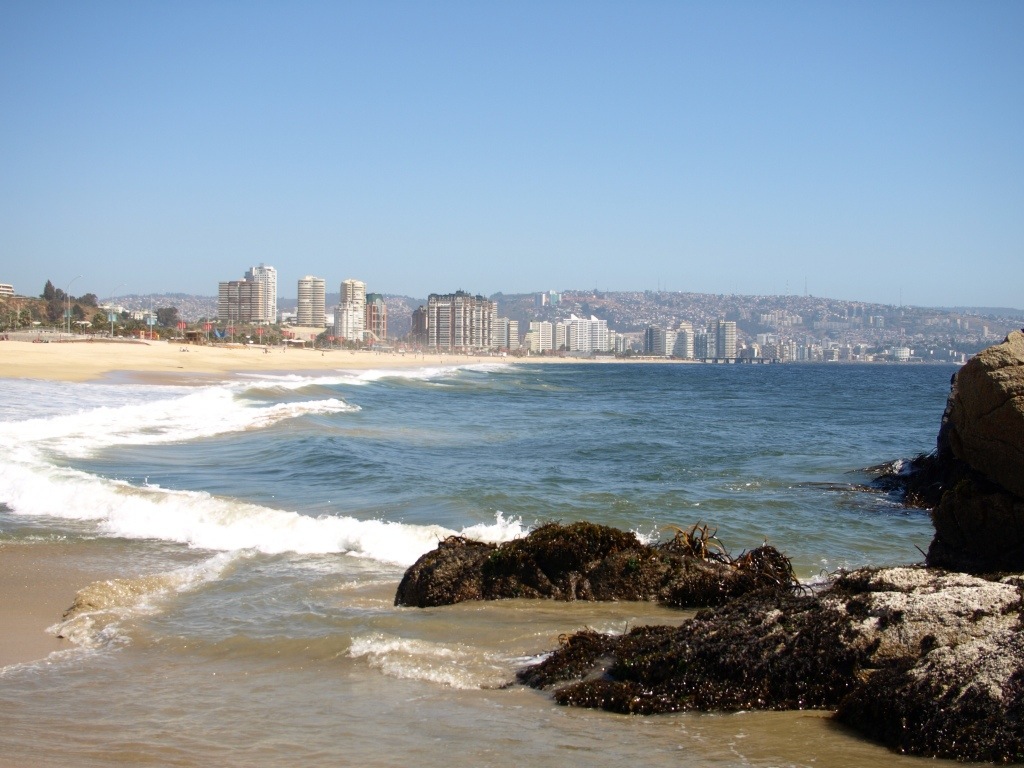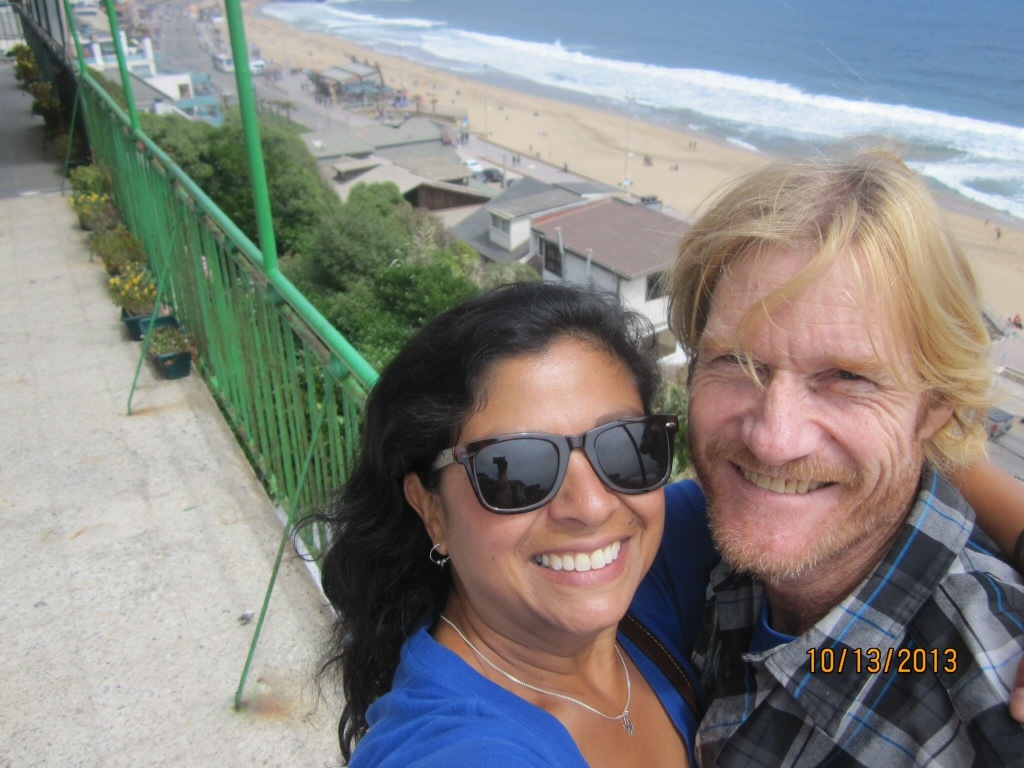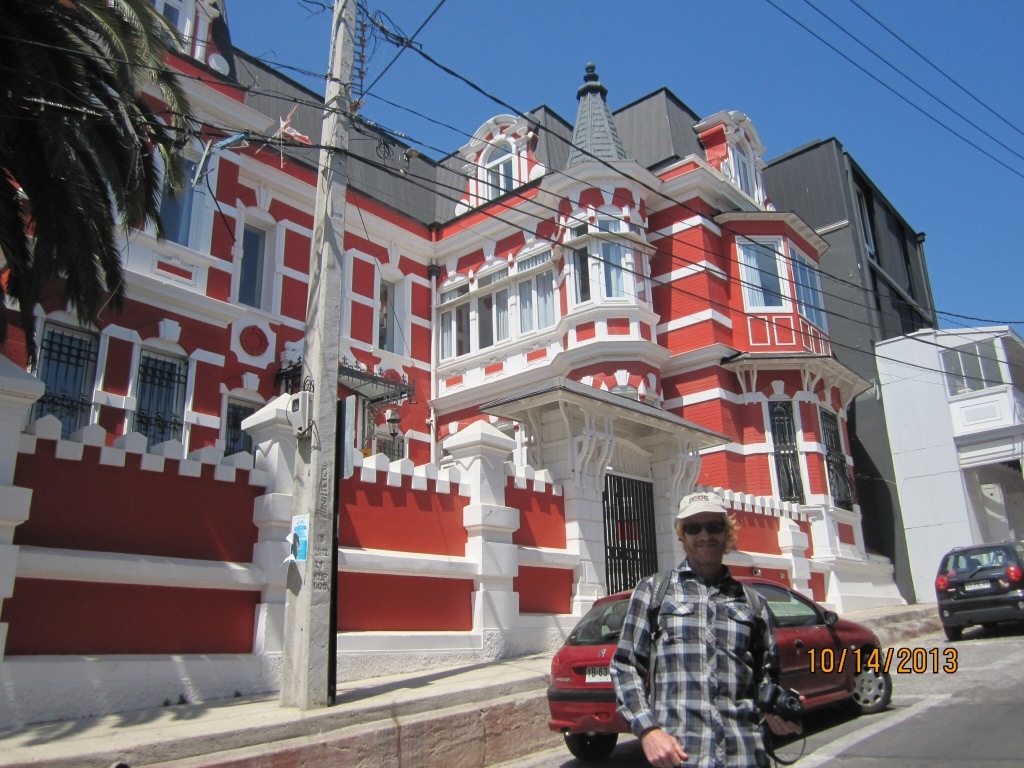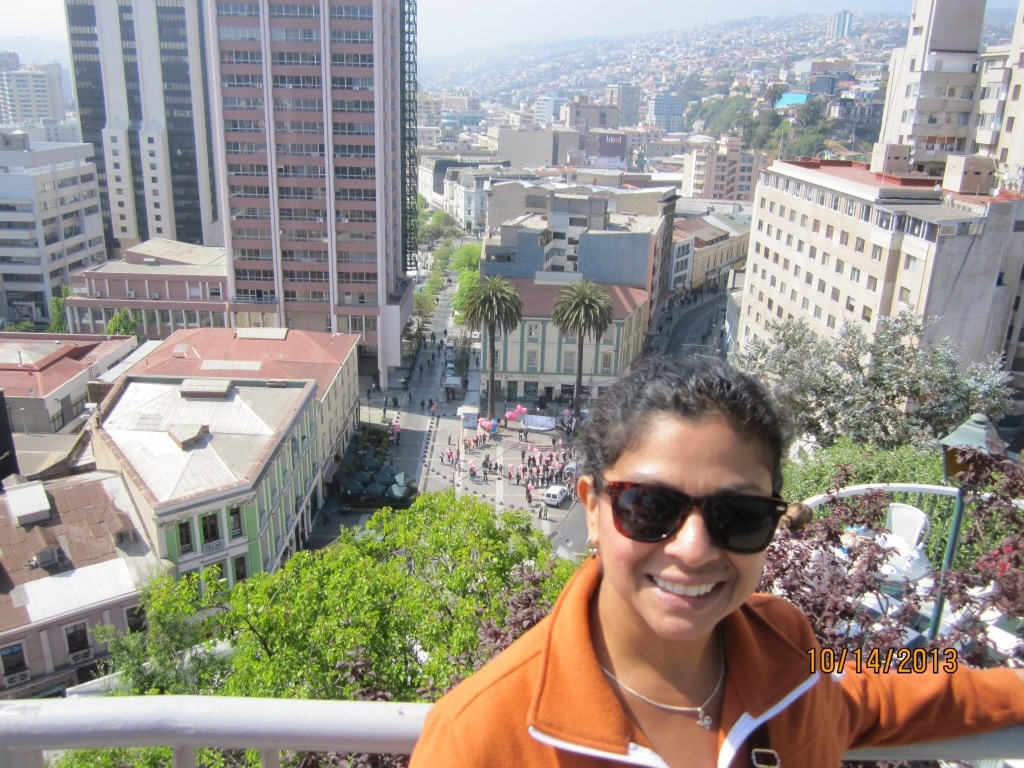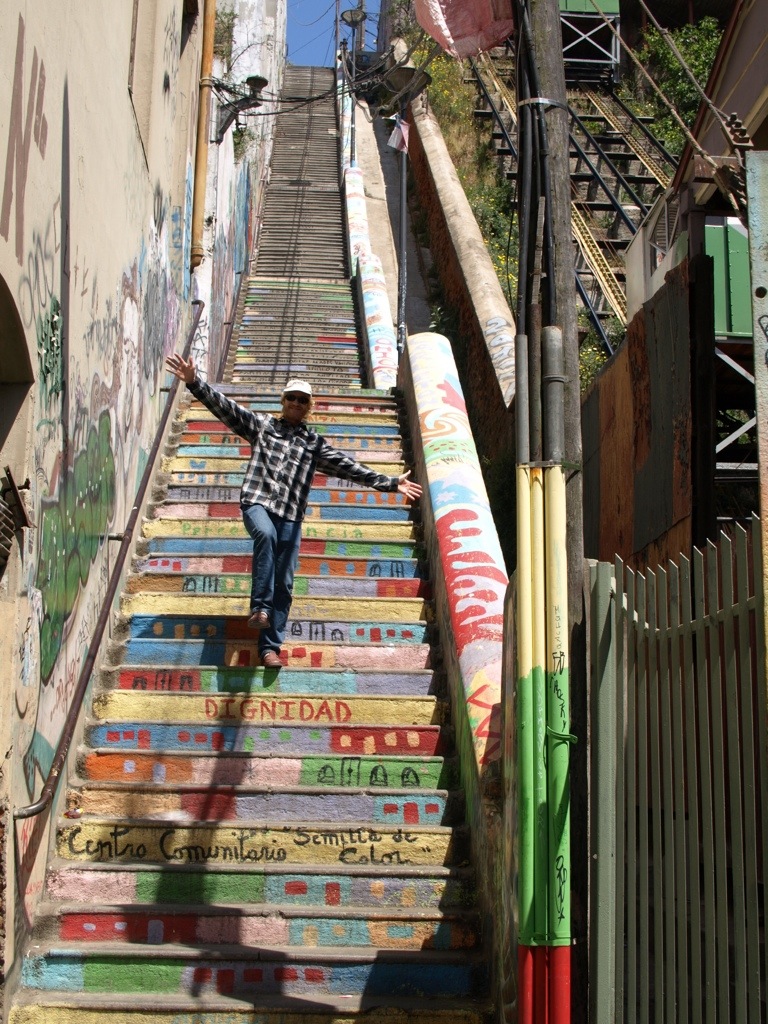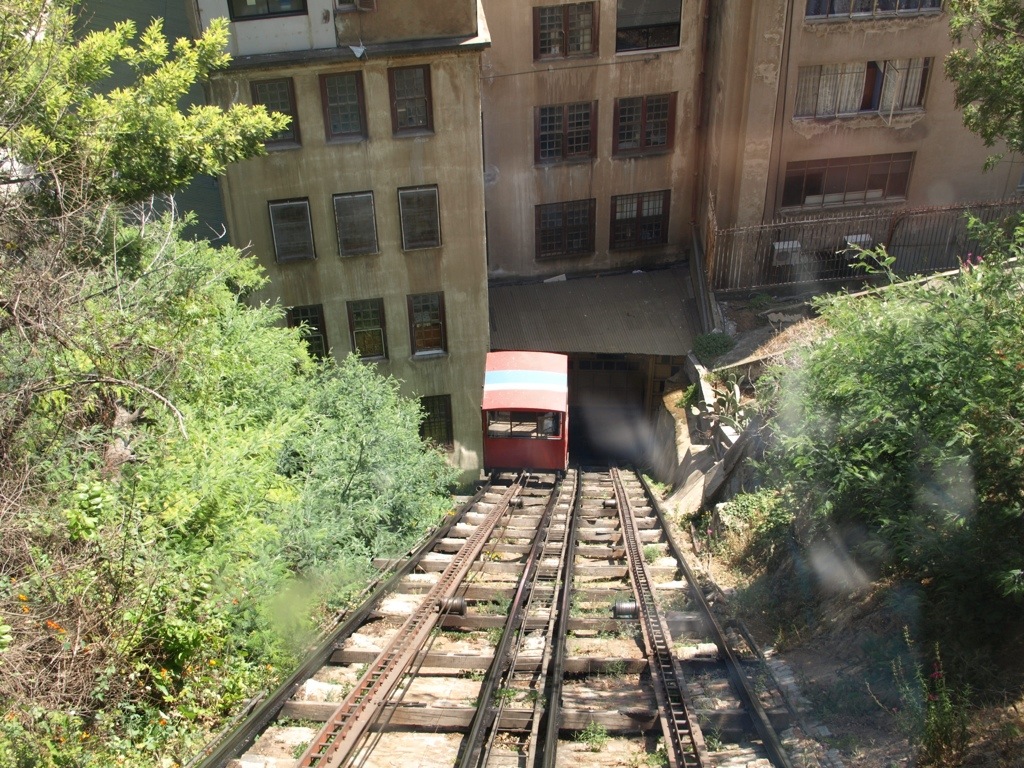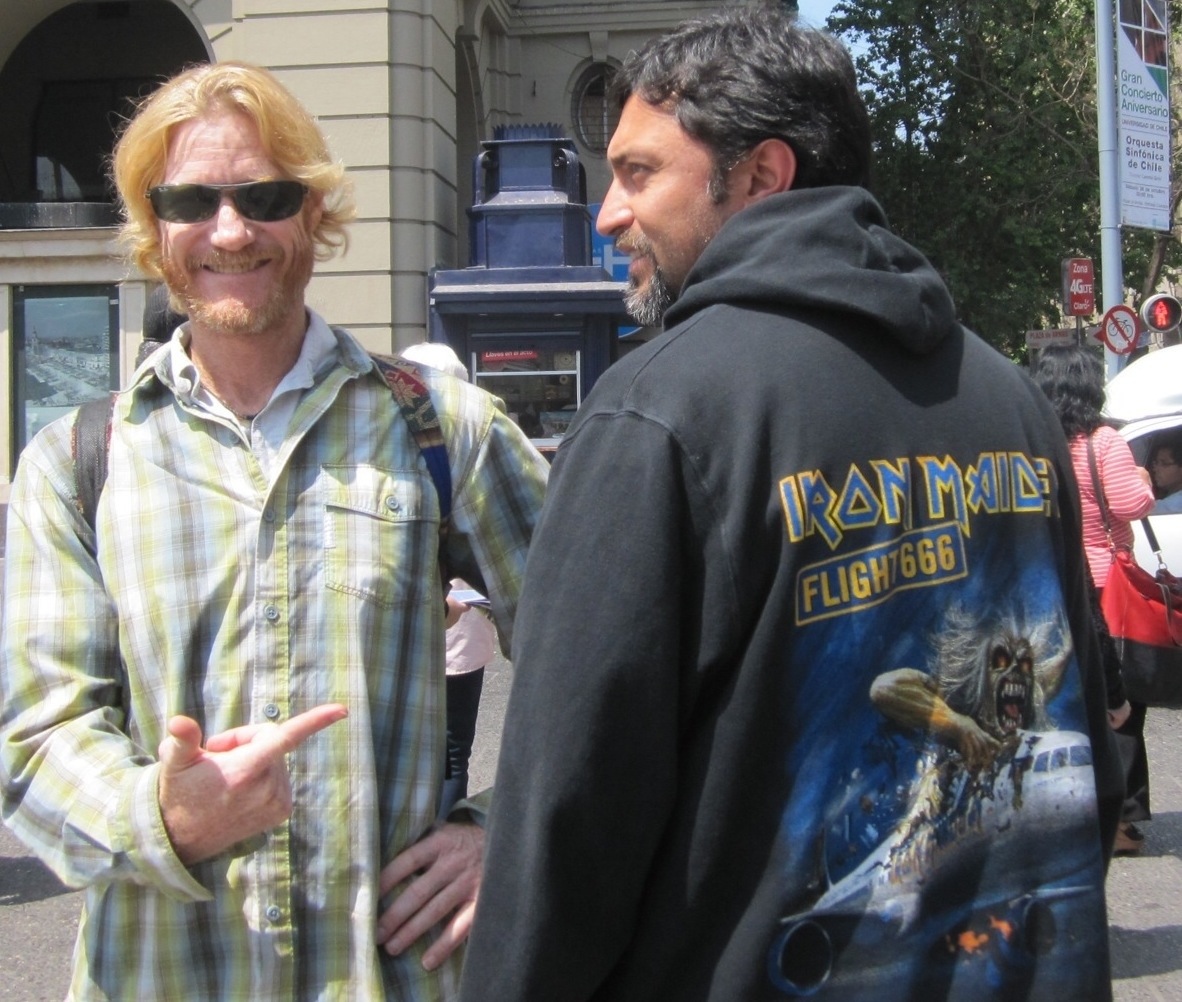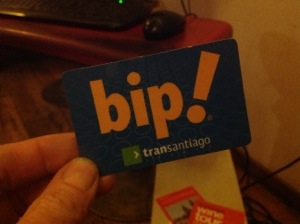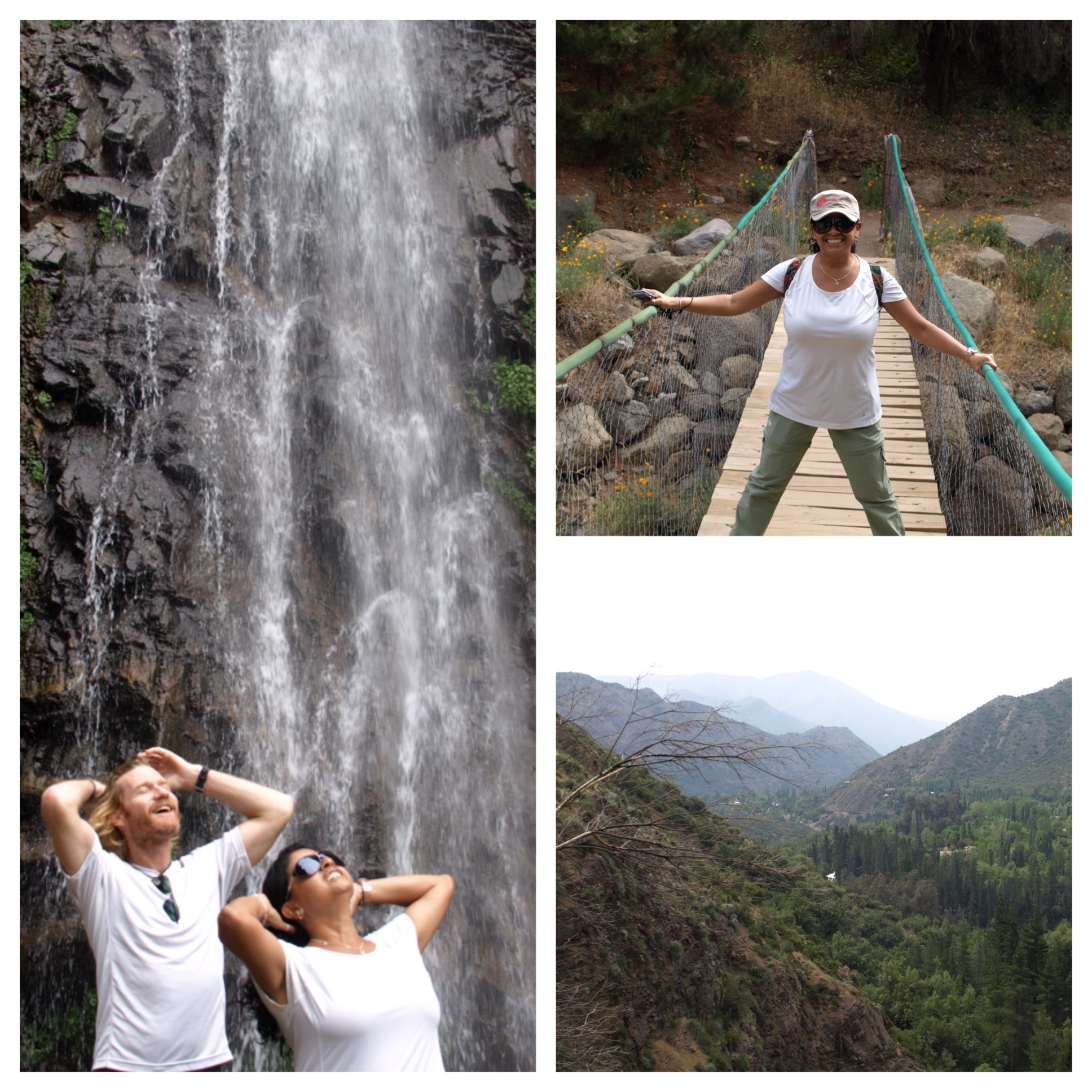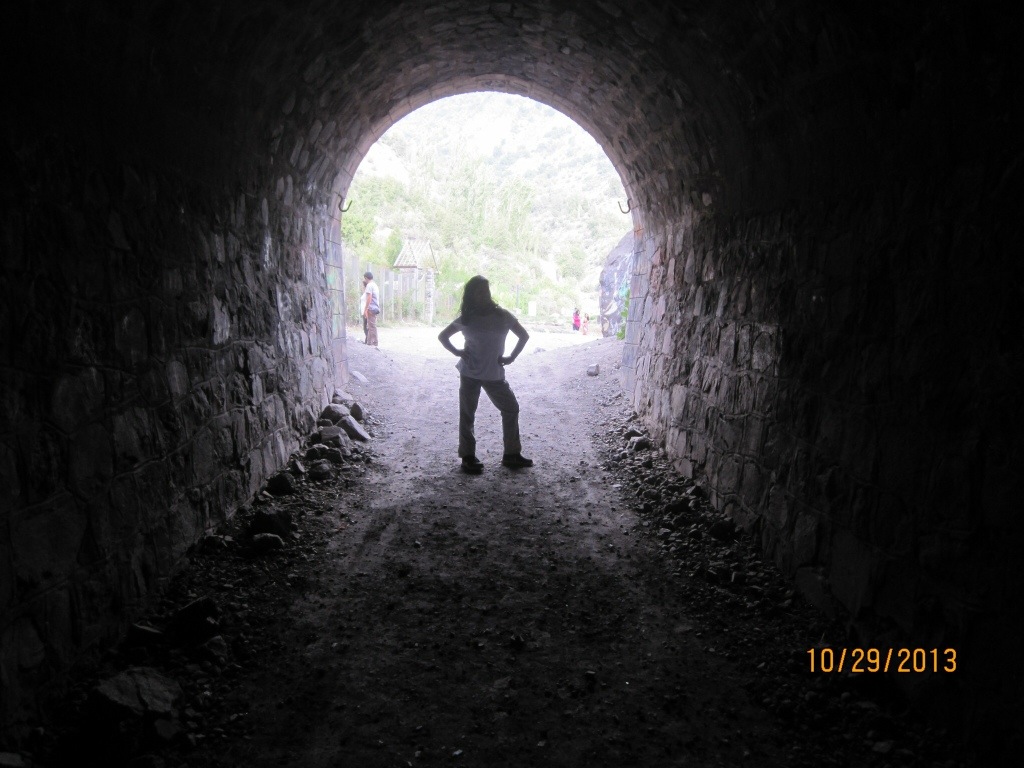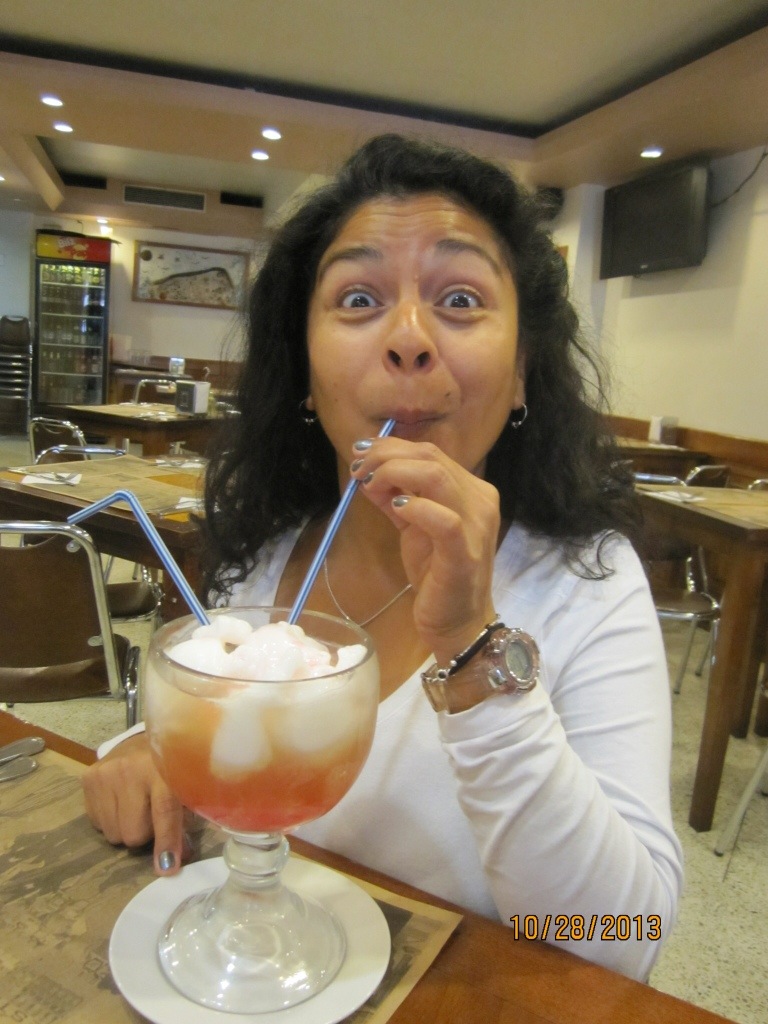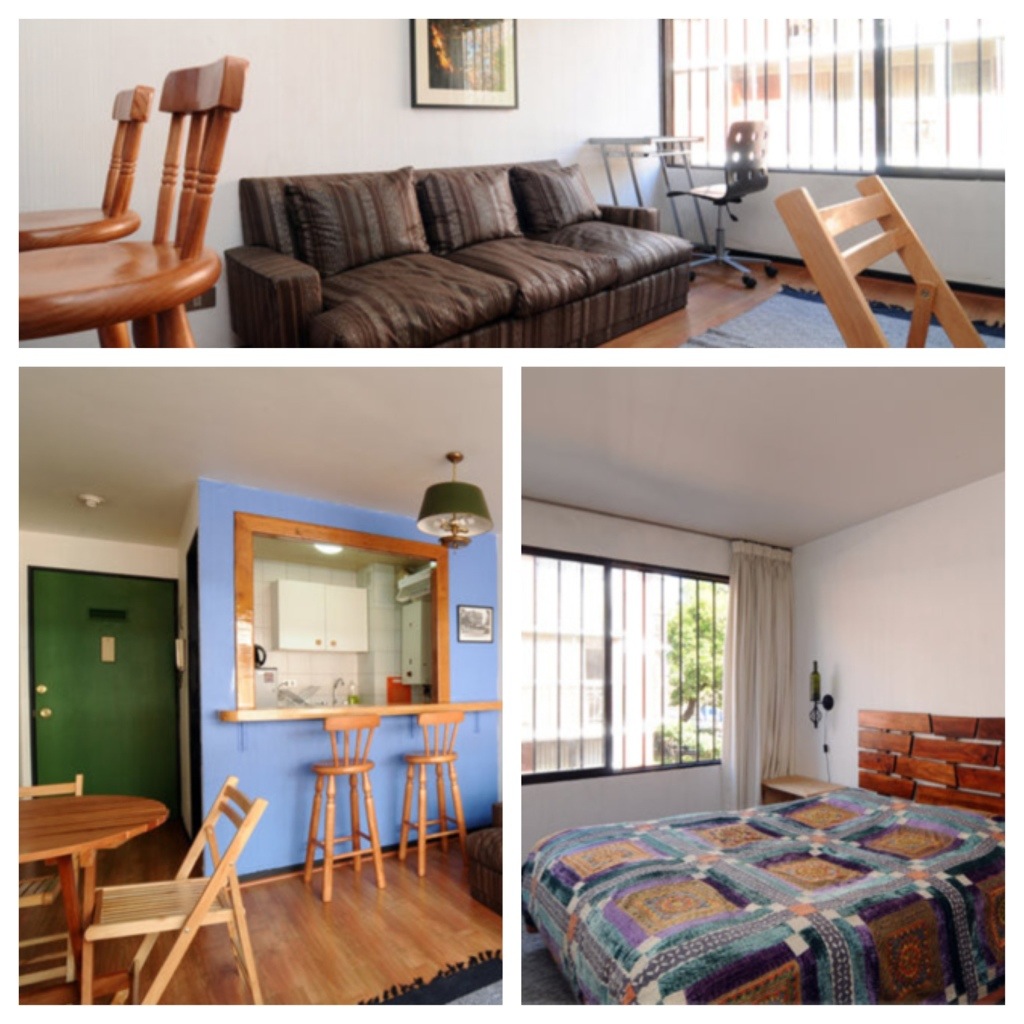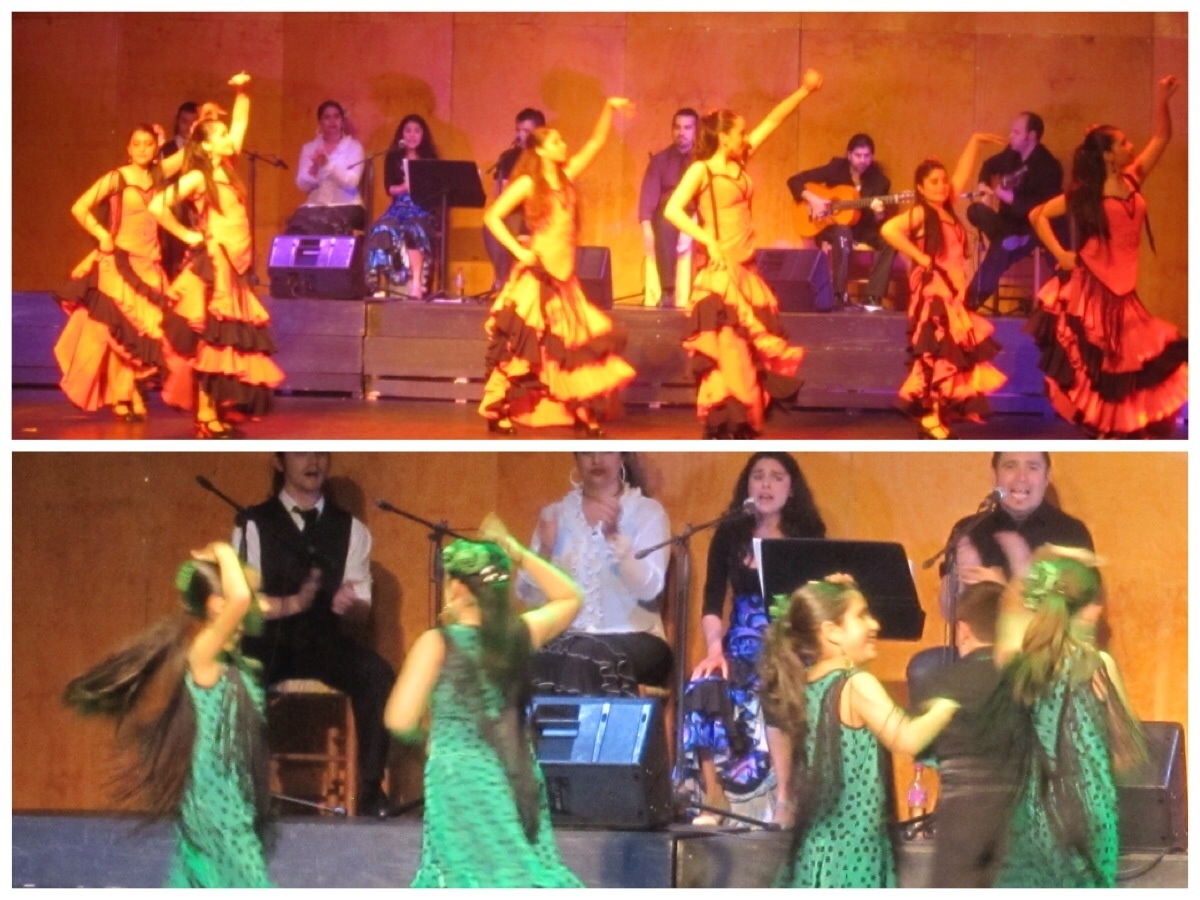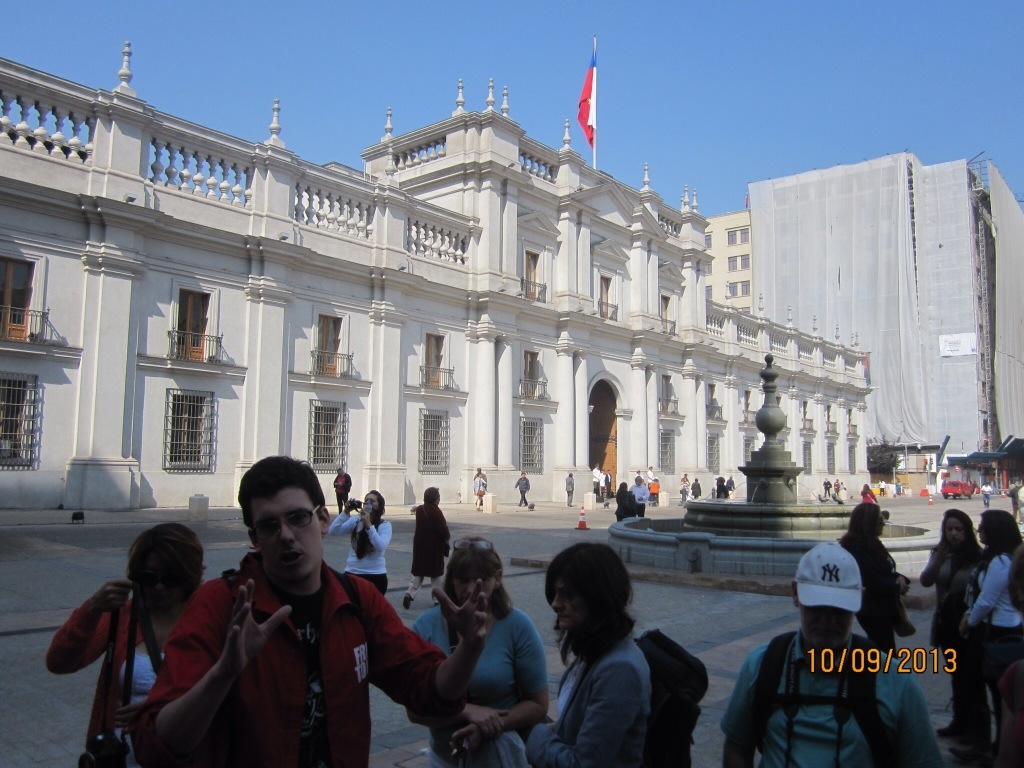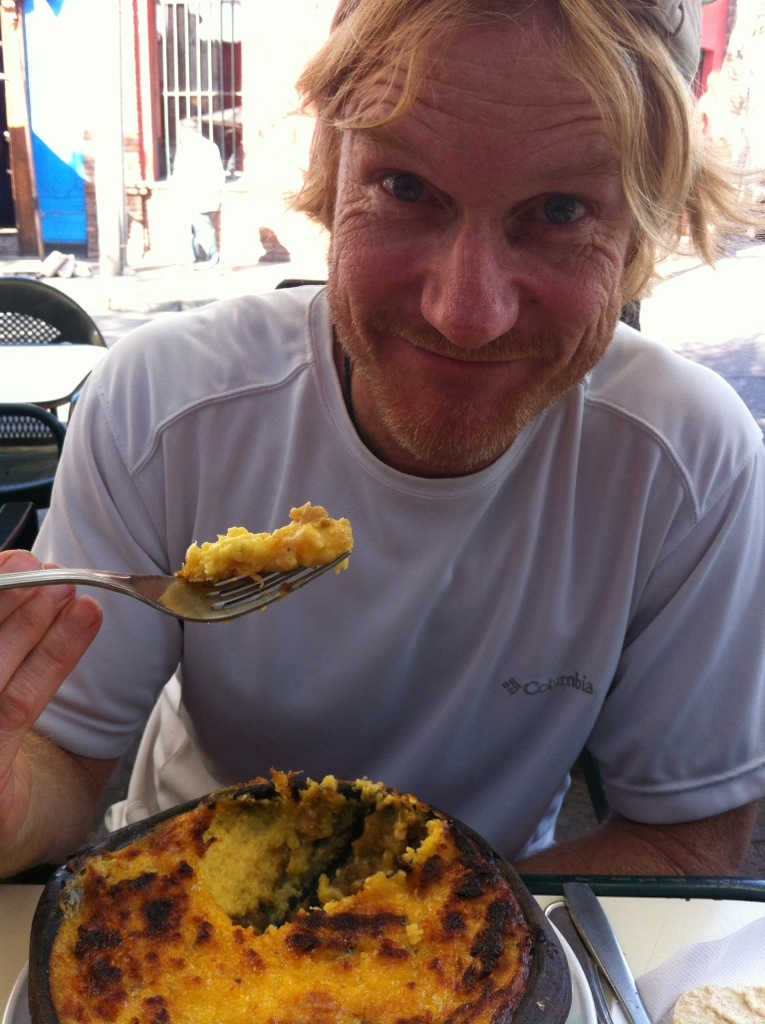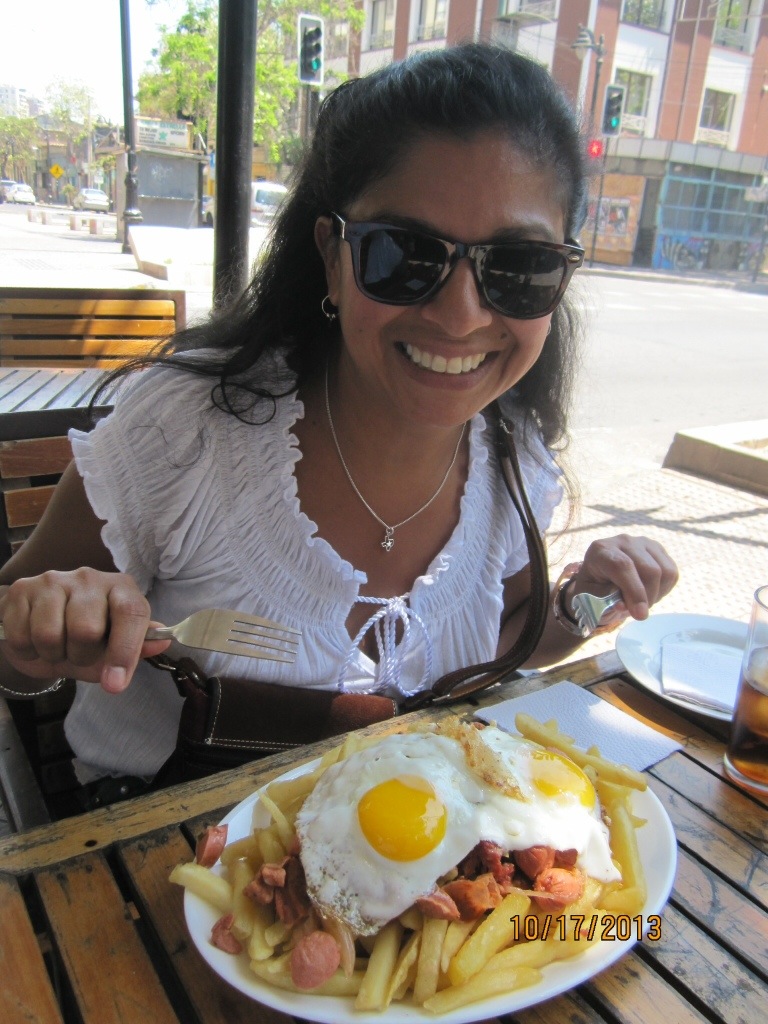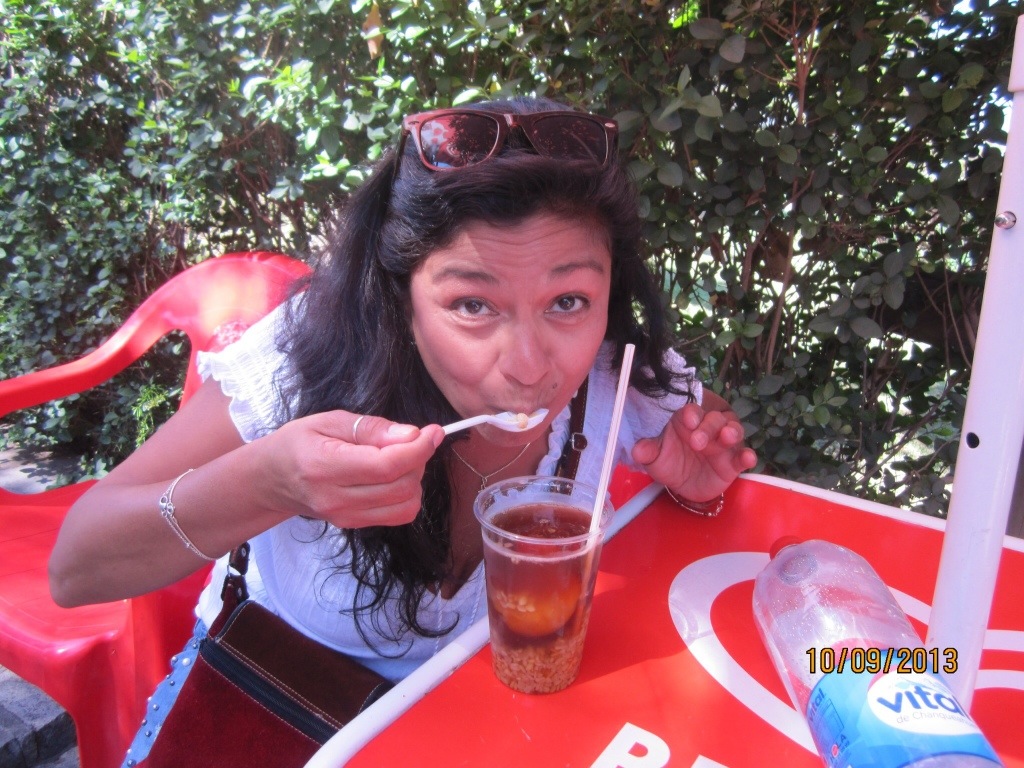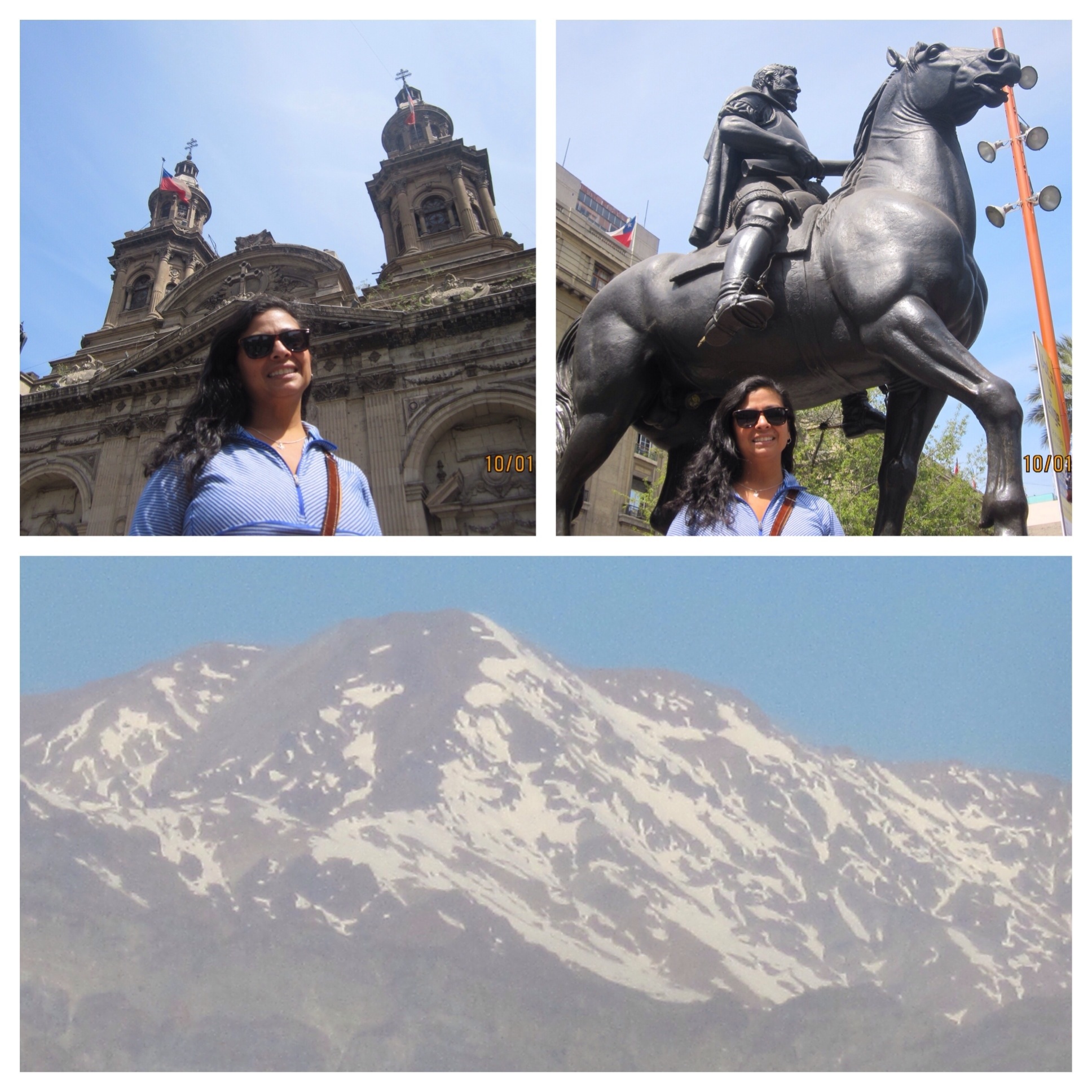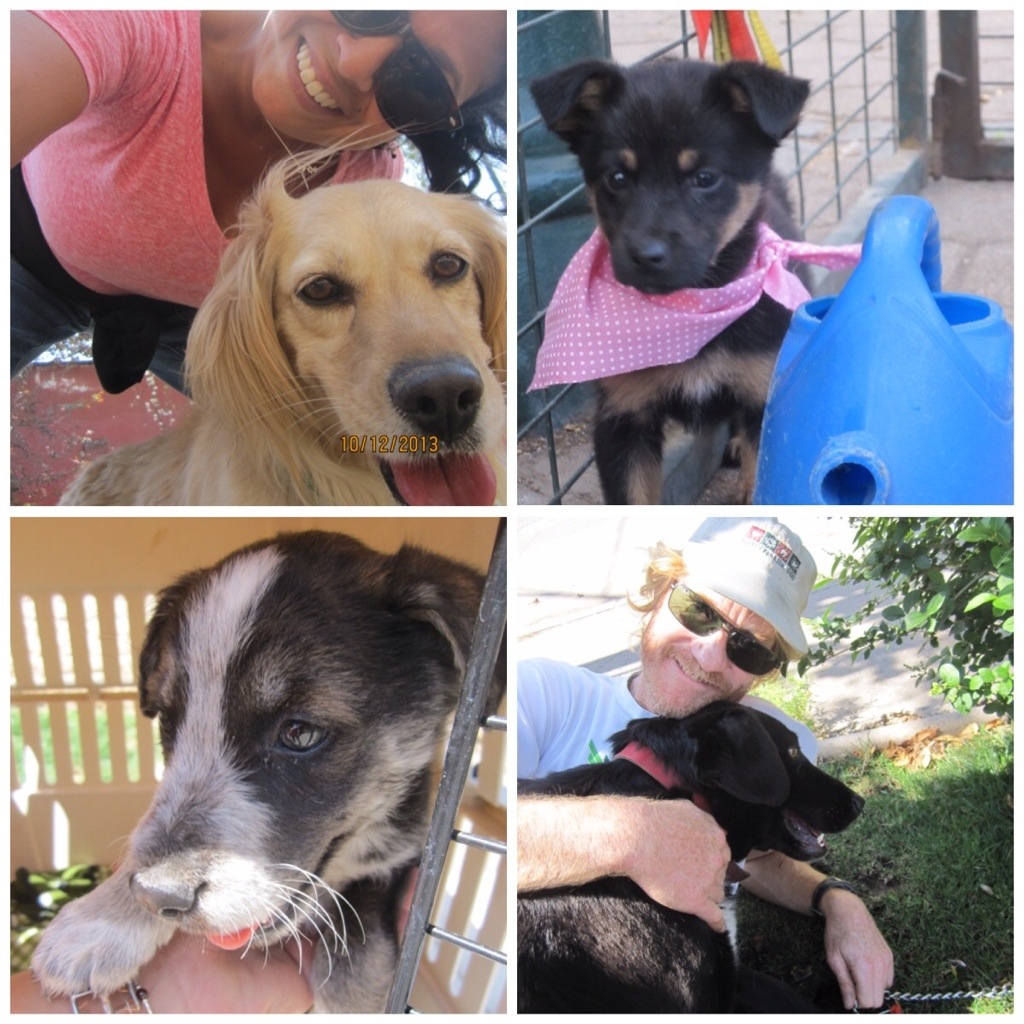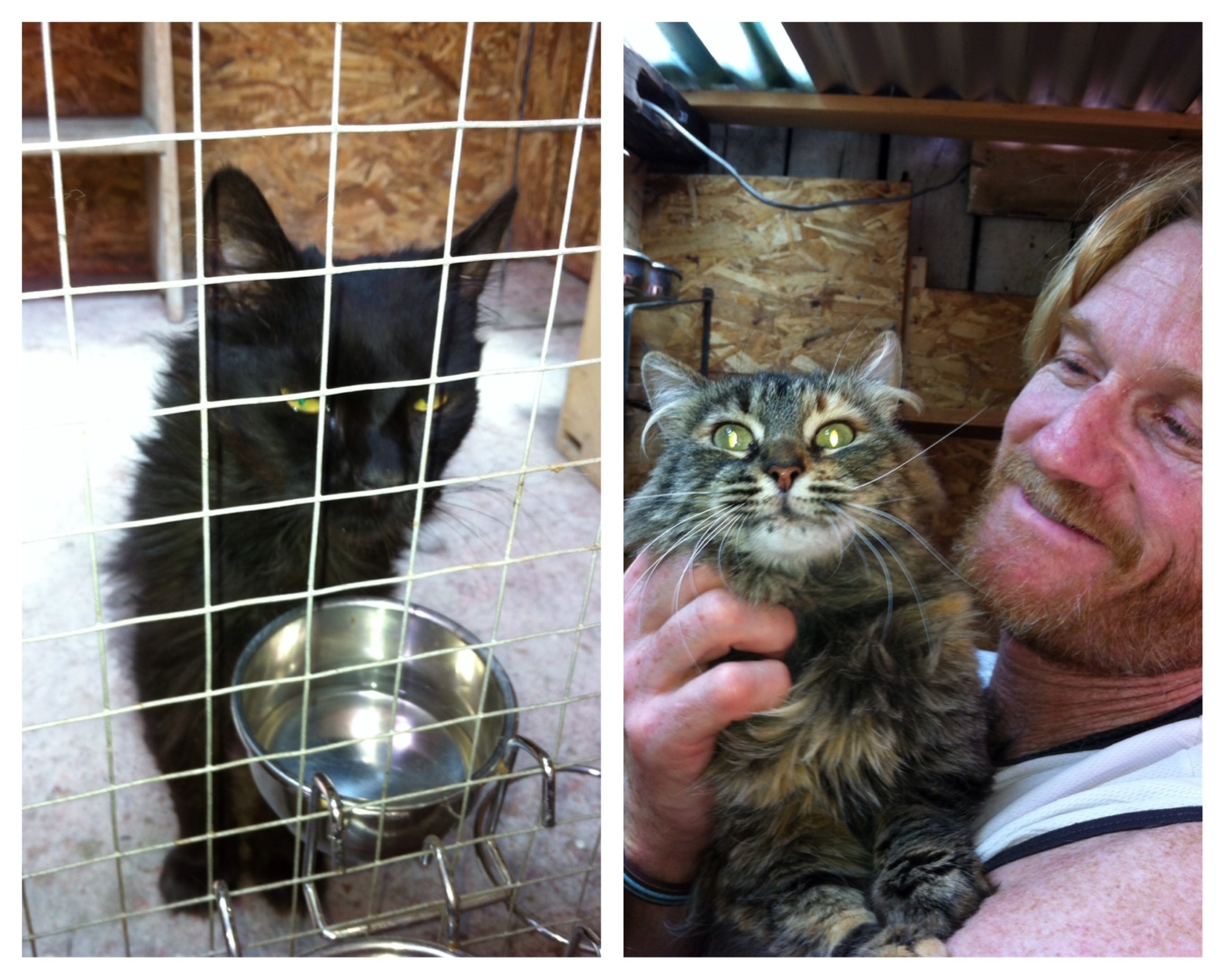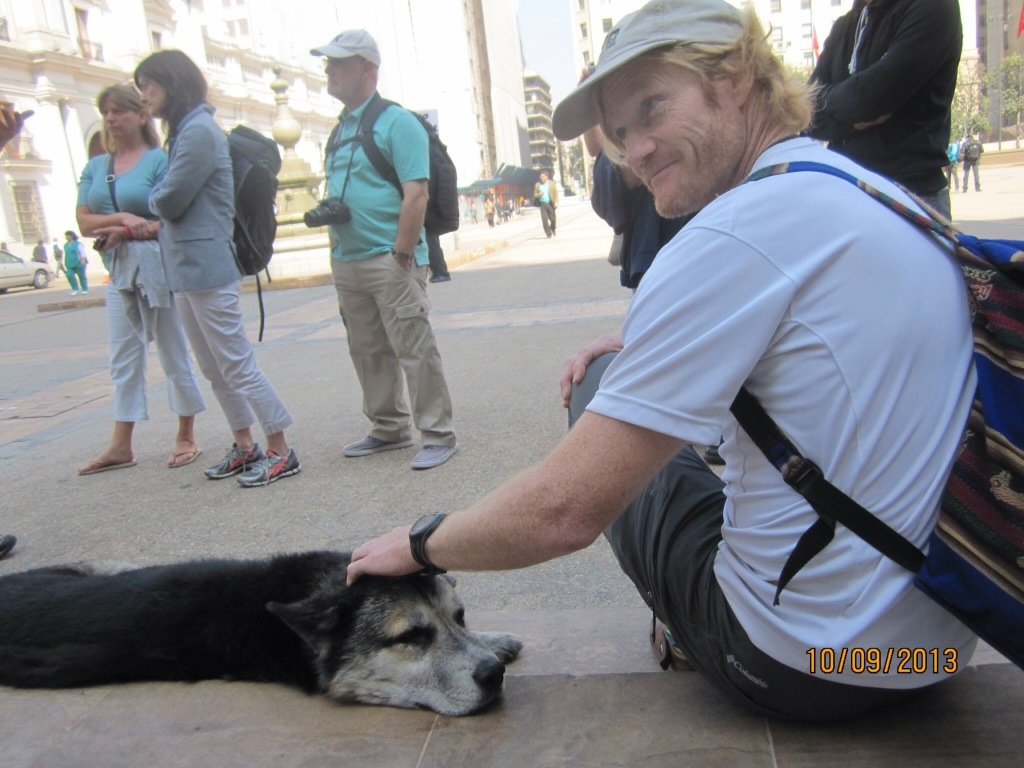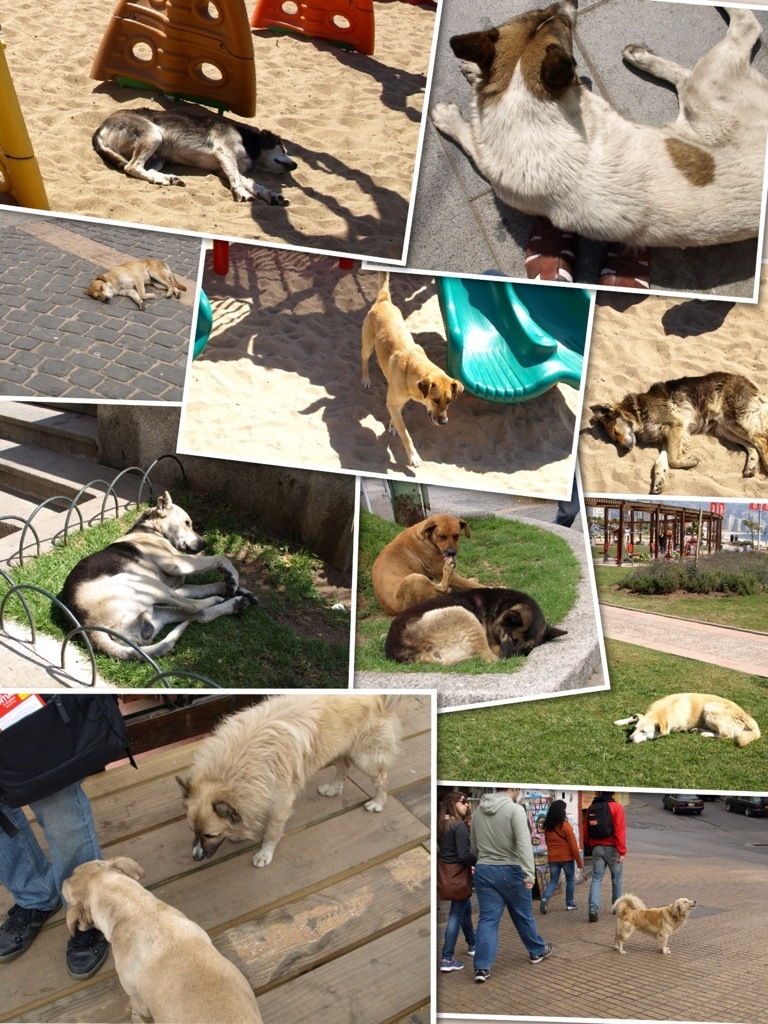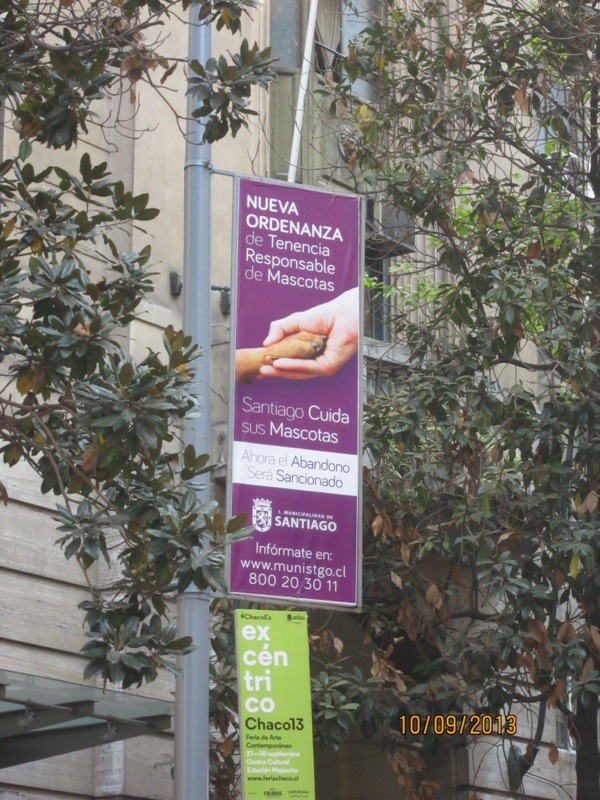(Torres del Paine, Patagonia, Chile – 4 December 2013) I struggled through the pass first, ditched my pack behind a boulder and rushed back to help Jessica. Take my hand if you want to live was implied. If I had shouted it, the thunderous winds would have dispensed my words anyway. Jessica’s head was dipped low for protection against the onslaught. She wasn’t moving forward at all. Little bits of grit carried by the rushing air stung and punished too much.
We’d already hiked uphill for 7 hours that day fully weighted-down with our packs. Our legs were weak from overuse. This final high pass into the Torres del Paine valley was the last challenge of the day, a distance of just 20 meters or so. But the wind was (no exaggeration) hurricane strength and walking forward into its teeth was fighting a force field.
Jessica grabbed my arm and we slowly stepped forward together. Even united, we had to pause several times to find our balance before restarting again for the relative safety of the boulder ahead where the winds were still high but manageable.
The last two hours of our hike had been against some strong winds, but the strength and volume of angry flowing air at this highest pass was orders of magnitude greater. It caught us by surprise. We wobbled down from the pass bewildered and completed the remaining steps to the refugio, shaking our heads all the way and thinking, no one will believe this.
Torres de Paine
Torres del Paine National Park will mean absolutely nothing to the average person from North America. Neither Jessica nor I had ever heard of it until planning for this trip began. But twice it happened that we told people Chile was included in our travel itinerary and were asked, “Are you going to Torres del Paine?” Having never heard of the place at that time, I’m sure my response was, “Taurus del WHAT?” A fellow Ultimate player (Patrick Christmas) was one of the people who told us about it. I had him spell the name for me as I typed it into my phone. (I have a place where I jot down interesting travel tips when I hear them.)
There are multiple sites in southern Chile/Argentina (regionally known as Patagonia) that contain dramatic landscapes. However, it is hard to imagine any more varied and spectacular as Torres del Paine. A literal translation of the name into English fails. Better to convey what the name means: Towers in/from the Blue. The word Paine (pronounced ‘PINE-eh’) is the color blue in the local dialect, and refers to the blue-colored lakes that dot the area. Torres is, of course, the Spanish word for towers.
The actual torres are just one geological feature within this magnificent natural wonderland. As you will see from our pictures there are lakes of blue, green, and grey, massive glaciers, magical forests, radical snow-capped mountains, rivers, ravines, ridges, and waterfalls…lots of waterfalls. Completing a circuit in and around the various features are hiking trails. Campsites and shelters- called refugios -are widely dispersed along the circuit. The place is so huge that it takes multiple days to traverse on foot, the only option available to visitors since roads will only take you so far into the park.
Preparing for our visit to Torres del Paine was a massive (and expensive) undertaking. We had to:
-
– rent camping gear,
– reserve 2 spots in 2 refugios the last 2 nights
– buy enough food for the 6 days we’d be in the park,
– figure out how and when we’d get to and from the park entrance,
– arrange the boat ride that would deliver us to the starting point of our hike, and
– not forget ANYTHING.
Without Jessica’s superior organizational skills, I don’t think we would have been able to pull it off.
The “O” and the “W”
Many people enter the park in the morning, see what they can see, and leave the same day. The hardcore outdoor enthusiasts (like Jessica and me, (yeah right)), will hike one of two principle circuits- the “O” or the “W.” So named for obvious reasons once you’ve seen the trails on a map. The first “3D” map gives you a good view of the O, which includes the W within it.
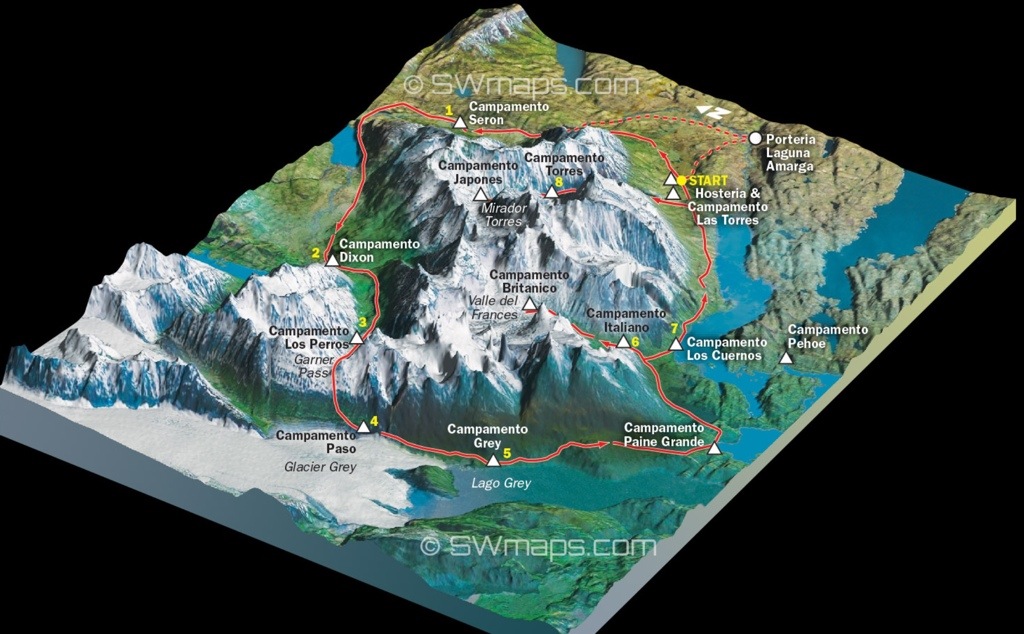
The red trail shown in this second map is the W. (Look closely at the map and you’ll see crudely drawn circled numbers on it. These correspond to the nights we spent in the park.)

We chose to do the “W.” Perhaps “I chose” is more accurate since Jessica would have preferred five days at a luxury resort (or any resort) over five days camping in the wilderness, if that option had been presented to her. Yes, it was something I really wanted to do…an experience of a lifetime. And while Jessica would not have chosen it for herself she’s never one to pass up on experiences of a lifetime. And so, she cautiously embraced the challenge.
Our first night of camping was on Lake Pehoé, a point outside the start of our actual hike. From this vantage, we could see a large swath of the mountainous area we would be hiking in the days that followed. We also see one of the parks pricier hotels.

To get ourselves onto the W circuit, we took a thankfully sturdy boat across Grey Lake to the drop-off point, located within close sight of Glacier Grey. Jessica breaks across the dry end of the lake in full pack. The boat awaits.
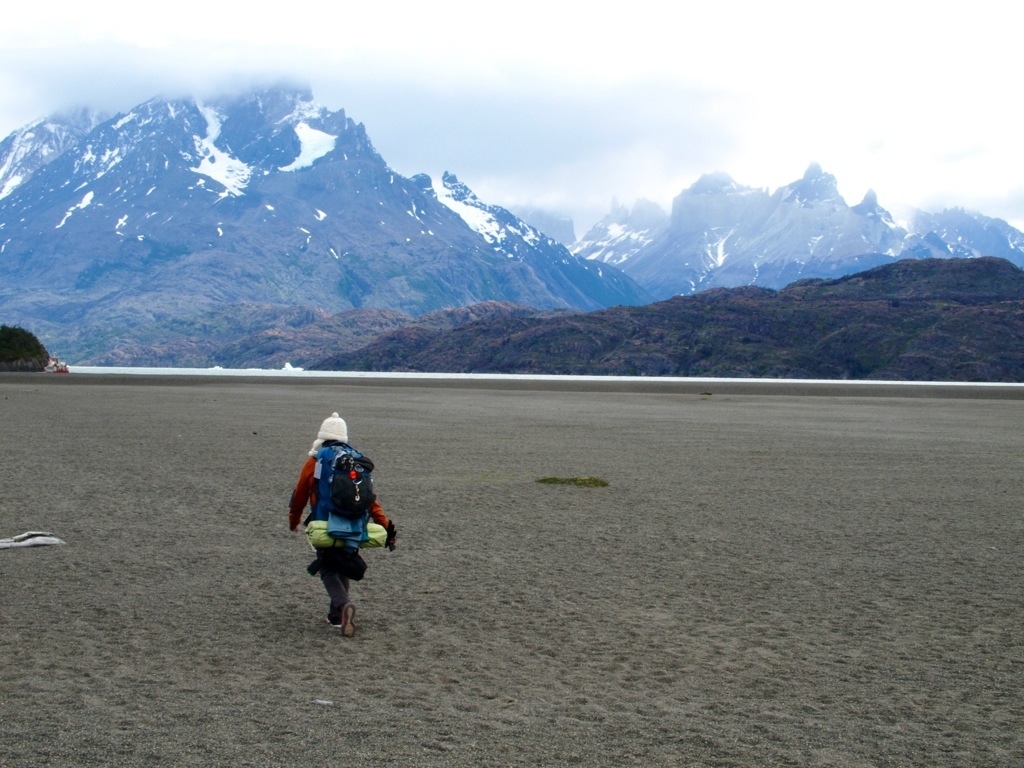
Broken iridescent blue chunks of the glacier floated nearby. The headwinds created substantial waves that exploded over the bow of the boat repeatedly. We rode safely inside the cabin.
The waters calmed as we approached the glacier and passengers were allowed up top for some photo-ops.
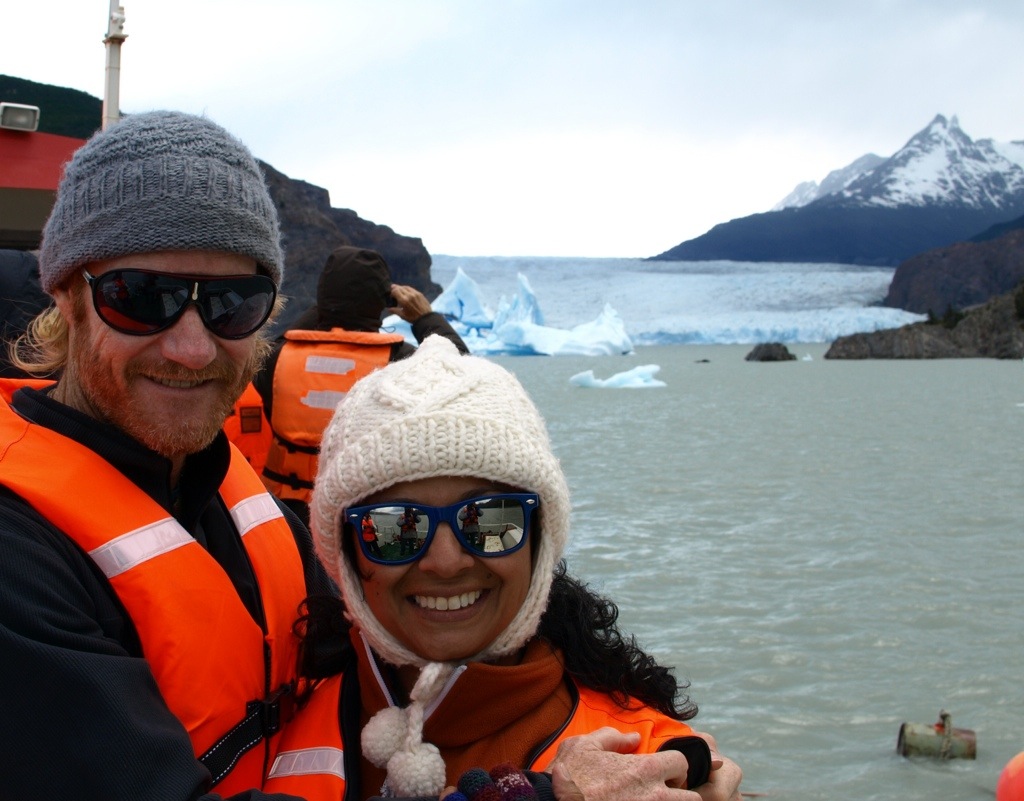
Degree of Difficulty: Hard
Our first day on the W was both heaven and hell. The spectacle of the glacier was mind-blowing. And this leg of the W had numerous spectacular views of it. But the hiking was steep in the up direction and our backpacks were at their heaviest (stuffed with 6 day’s worth of food). I misinterpreted the map and what I thought was going to be a 3 hour hike, turned into nearly six. Also, I completely missed the map’s trail difficulty rating chart, which clearly showed this portion of the W has the highest difficultly ranking. What a way to get started.
Crossing those ravines with the scary metal “ladders” was especially challenging for Jessica. Her legs are strong, but not that long; blindly finding the ladder rungs with her toes was not her idea of a good time.
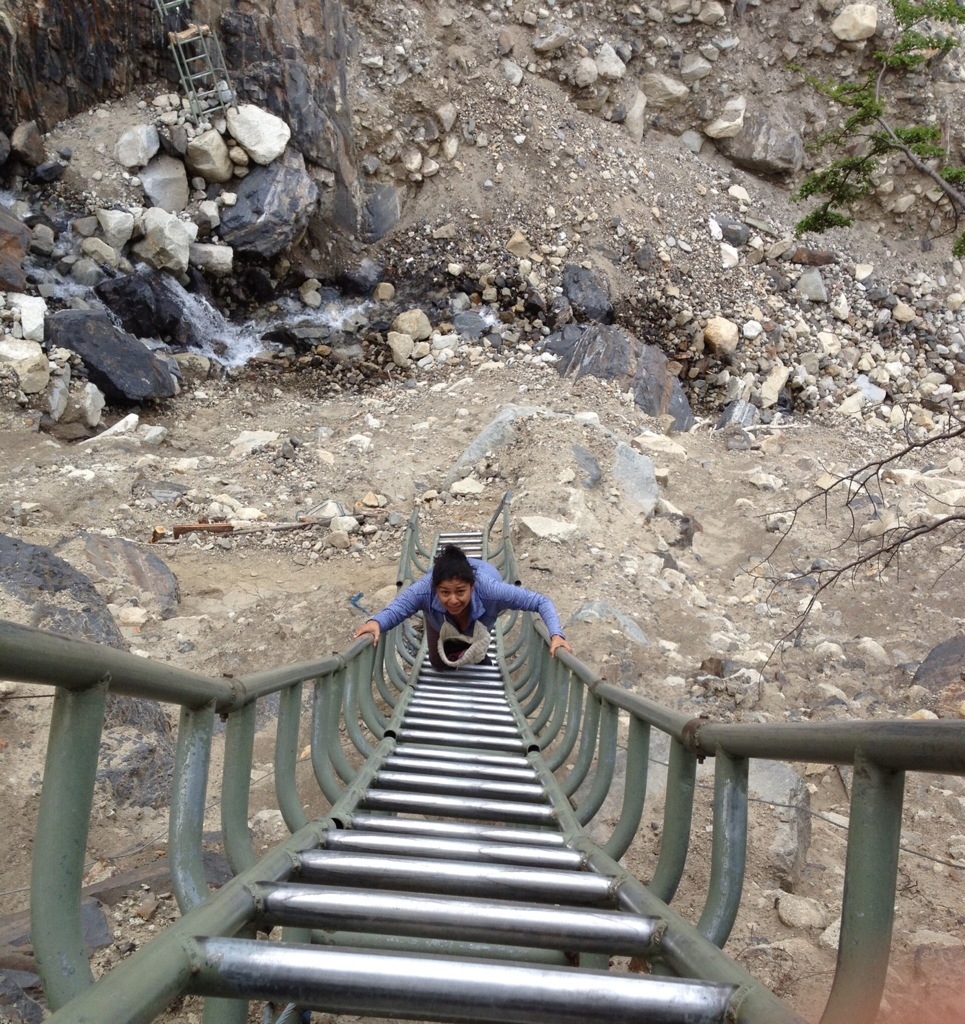
The hardest part was the uncertainty. When would we arrive at the campsite? How many more gorges must we cross? The hour grew later and we feared nightfall would find us before we found the camp. Jessica was at her wit’s end and I was struggling to stay positive myself. Finally, with about an hour of dusk left, we spotted an orange tent through the trees up ahead. We’d made it to Camp Paso.
The tent went up quickly. Dinner prep for our starving selves followed equally as fast. The campsite was primitive- no showers, no running water (other than the small stream that cut through middle of camp), and just one outhouse…sans toilet. Despite the hardships, we were glad to have survived day 1.

Note to all: I won’t recount every step of every day on the trail, but I am keen to convey just how amazingly tough and stunningly beautiful this place is. Trudging these trails is not for the weak-hearted or weak-kneed, but the rewards of the natural landscape are abundant. There is hardly a place to tread in Torres del Paine that is not heavily imbued with wondrous views, and yet the extreme physical exertion and associated discomfort is a worthy adversary that competes for your constant attention. Great mental focus is required on many parts of the trail, too. It can be rocky, slippery, muddy, and steep….and many times all of those simultaneously.
Crossing a large ravine on a suspension footbridge.
Backtracking and Carrying Forward
Up early and refreshed the second day, we backtracked the left part of the W until we reached Refugio Grey where our hike had begun the previous day. Returning in the downhill direction shaved two hours off our hike. A bite of lunch later and we continued on for another 5 hours to Refugio Paine Grande. Once more, expectations played a large role in our psyche. We expected that our afternoon hike would take roughly 3 1/2 hours…the fact that it ended up taking 5 means we not only had to absorb the physical toll exacted by an all-day hike with full packs, but that we also did the “are we there yet?” dance. This is when you convince yourself it can’t possible be much further, but really….it is. Distances are so exaggerated at Torres del Paine; what looks to be not that far, can be practically unreachable.
As we hiked through the final valley that ultimately delivered us to the second campsite, strong winds pushed us along but also twisted us from side to side on the trail as it caught our backpacks. The wind followed us into camp and made great fun of our efforts to set up the tent. Jessica and I did pretty well, thanks in part to a couple of fellow hikers lending a hand. Some campers appeared to be wrestling alligators as the wind whipped their tents sharply. We saw others comically chasing pieces of their tent equipment that wasn’t thoroughly tied down.
Sleeping amid the howling and buffeting wind was not as challenging as you might guess; tired bodies will sleep, regardless.
The weather cleared by morning.
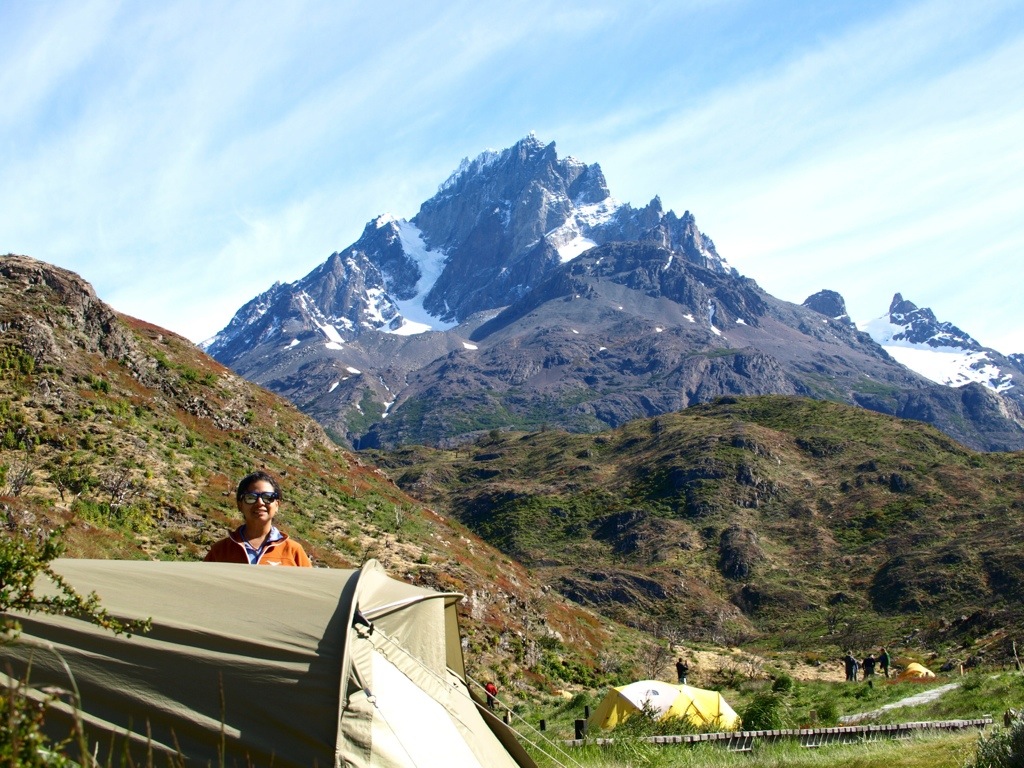
Snickers in the French Valley
Our third day backpacks were a couple more meals lighter and the planned hike that day relatively easy. [Note, none of the hiking trails at Torres del Paine are “easy.”] We were headed only to Camp Italiano (for those following on the map) which sits mid-W. The sprawling camp was found just across a beautifully noisy tumbling river and half-hidden among tall trees. There we pitched our tent and knocked out another meal. Only the hike deeper and higher into Valle Francés remained and then the middle-stroke of the W would be complete. Jessica decided she’d hiked quite enough the past couple of days and would enjoy relaxing her muscles at camp while I continued into the valley alone and wearing only my day-pack.
My hike into the Valle Francés turned out to be a true highlight for me. The trail had so many terrain variations that my feet never knew what the next step would bring. Some parts were smooth and playful, while others downright jagged and angry. It was supposed to be 4 – 5 hour (round trip) trek, but with only my day-pack on, I was able to move quickly and would surely beat that estimate. The day-pack carried only my camera and an extra jacket. I didn’t have to carry water since I could use any trail-side stream as my water fountain. This was true throughout our entire hike, too. Whenever we needed water, I’d simply dip our canteen into a river to find fresh, clean, cold, delicious water. How cool is that?
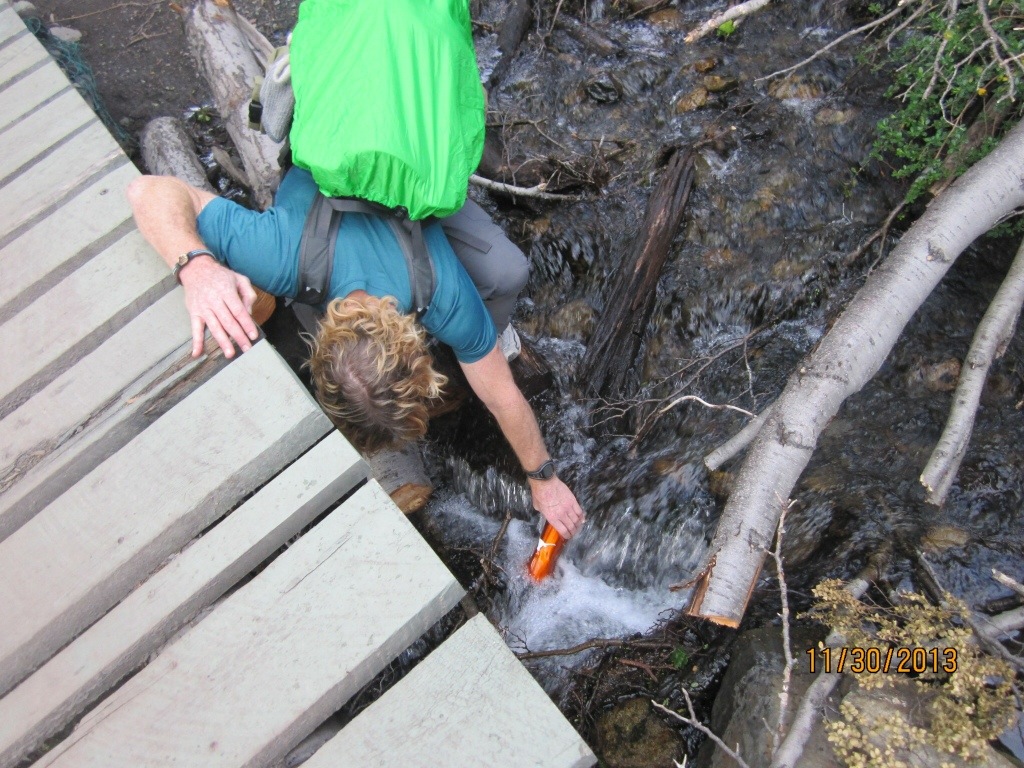
My view looking back down the valley from whence I came.

Here is the selfie video I shot after reaching the scenic overlook at the end of my hike into Valle Francés. Apologies for the Snicker smacking.
Hiking Karaoke
We awoke the morning of our 4th day on the trail to a sprinkle of light rain and sleet. By the time we were up and moving about the tent all precipitation had turned to snow. Being from Texas, snow is a rarity in my life. Seeing that friendly snow drift down through the trees made me smile like a kid at Christmas.
Weather can span from snow to sleet to rain to sun and back again all within the same half-day. And you’ve already heard about that notorious wind. Supposedly, November and December are the two windiest months. That said, many sections of Torres del Paine are almost always windy. One fellow hiker we met said he’d never see a trail map with symbols for high wind in any other place except Torres del Paine.
Our hike on day 4 was another long one (similar to day 2). We mentally prepared ourselves for 8 – 9 hours on the trail. Aside from taking time out to enjoy the immense beauty around us, we also enjoyed a few rounds of hiking karaoke. This is where we each try to sing a song from start to finish. I didn’t pretty well belting out some Lovin’ Touchin’ Squeezin’ by Journey, while Jessica nailed Charley Daniels’ Devil Went Down to Georgia.
The final few hours of our day 4 hike were mostly uphill. Some steep, some only slightly elevated, but nonetheless, every single GD step was uphill. Towards the end, we weren’t singing anymore. Jessica had decided that W was officially her least favorite letter. And yet, just as we were the most exhausted….we approached the windy entrance into the final valley. Up and up we climbed against the harsh wind until we had reached the high pass.
The video below shows us nearing the windiest part…described in the opening, above. Capturing that drama with my phone’s camera would not have been possible; too dangerous.
Refugio El Chileno
We’d spent four consecutive nights in a tent. This night would be our first of two in a refugio (or refuge) and sweet reward after so much tough trekking. Refugios are not hotels, but they are more than simple shelters. They have a staff, a mess hall for eating, bathrooms with hot water for bathing, and a half-dozen rooms lined with bunk beds for sleeping. Once checked-in, Jessica and I were led down the hall to our room, one that we would share with six others. Three of those six were in the room at the time we arrived, a mom, dad and their early 20’s daughter, part of a family of four from California. We must have looked like hell coming through those doors.
The staff of the refugio pointed upwards to the bunks that would be ours…on the third bunk level. Jessica exhaled in disgust while speaking the words, “What the shit?” Followed by, “Oh well… what’s one more climb?” She felt kinda bad for swearing in front of these complete strangers, but she felt worse having to ascend to the third bunk-deck just to go to bed.
Breakfast the next morning was good but too light for the circumstances. We had burned a lot of calories recently and at least I was feeling the need for more, especially when my morning plans were to complete the last leg of the W and hike up to see the actual Torres del Paine. Jessica was back and forth on whether to go or not. In the end, she chose to hang out in the warmth and comfort of the refugio. I saddled up with my day pack for the final summit. It took me 90 minutes to get up to the overlook, sleet salting me for much of the trek. It was another tough hike. Here’s what I’d come to see.
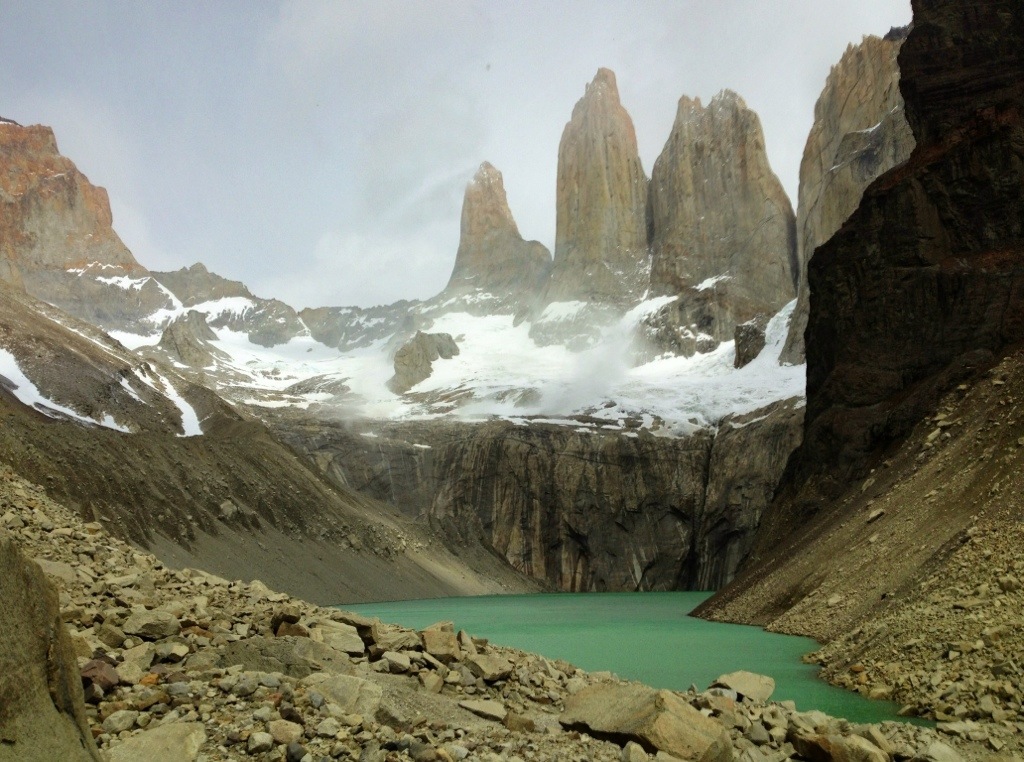
Satisfaction of a Completed W
It was lunchtime when I returned from seeing the towers. I replaced some calories and then Jessica and I packed up for the descent out of the valley. Our final hours on the trail were windy but nothing as intense as the previous day. We safely crossed back across the high pass and then ambled slowly downward the two or so hours it took to reach Refugio Las Torres where we would spend our final night in the park.
The time to reflect and rejoice the toils and triumphs of the past five days had arrived. Jessica enjoyed a glass of red wine and I ordered two pisco sours (hey, it was a 2×1 special). We also enjoyed our chats with fellow hikers. Staying at the refugios turned out to be great for meeting travelers from all over the world. We get a good kick out of sharing our travel-the-world-for-a-year story with others; fellow travelers are typically very enthusiastic and show their excitement for our plans easily. We also get to hear stories from them about additional great places for us to visit.
Torres del Paine was not a place known to us until recently. Now we know it well and can say first hand that it is as worthy a destination as any offered by the natural world. If you like a good hike, add Torres del Paine to your playlist.
Here are more pics of our time there.
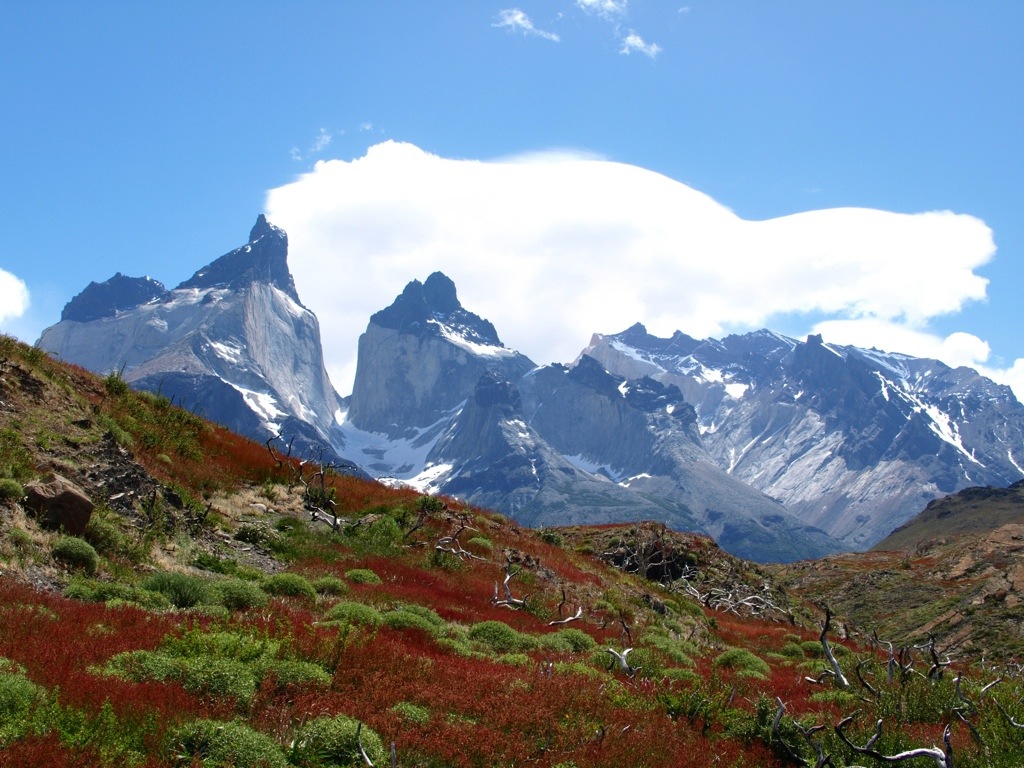
Can you pick out Jessica in the distance?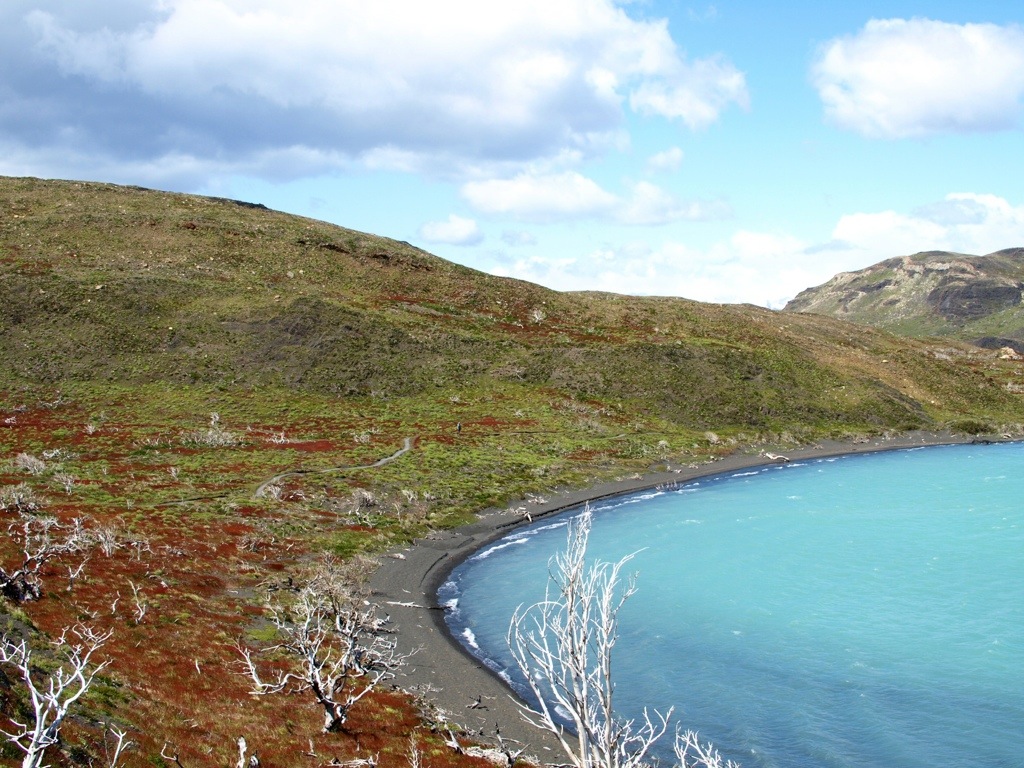
Jessica watches some guanacos from the bus. There were many of them on the highway leading to Torres del Paine.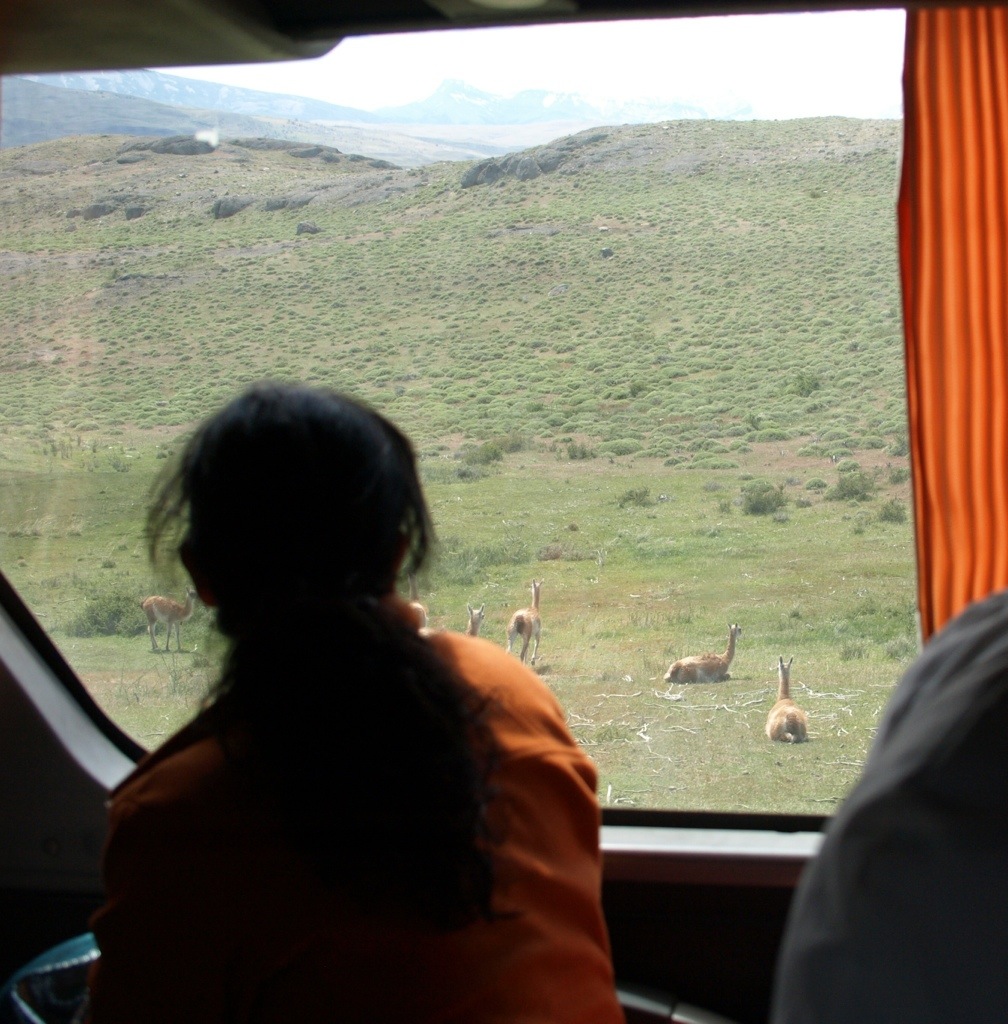
Torres del Paine for the win!!!